June 19th, 2025 - Reykjavik
Due to the bad weather and after yesterday’s long drive, we slept in and then drove back to Grundafoss, which we had been unable to visit yesterday because of the rain. Unfortunately, the weather had only improved slightly, but at least it had stopped raining. On the way to Grundafoss, we discovered another photogenic shipwreck, the Sandgerdi GK-2. We stopped there briefly to take some photos:
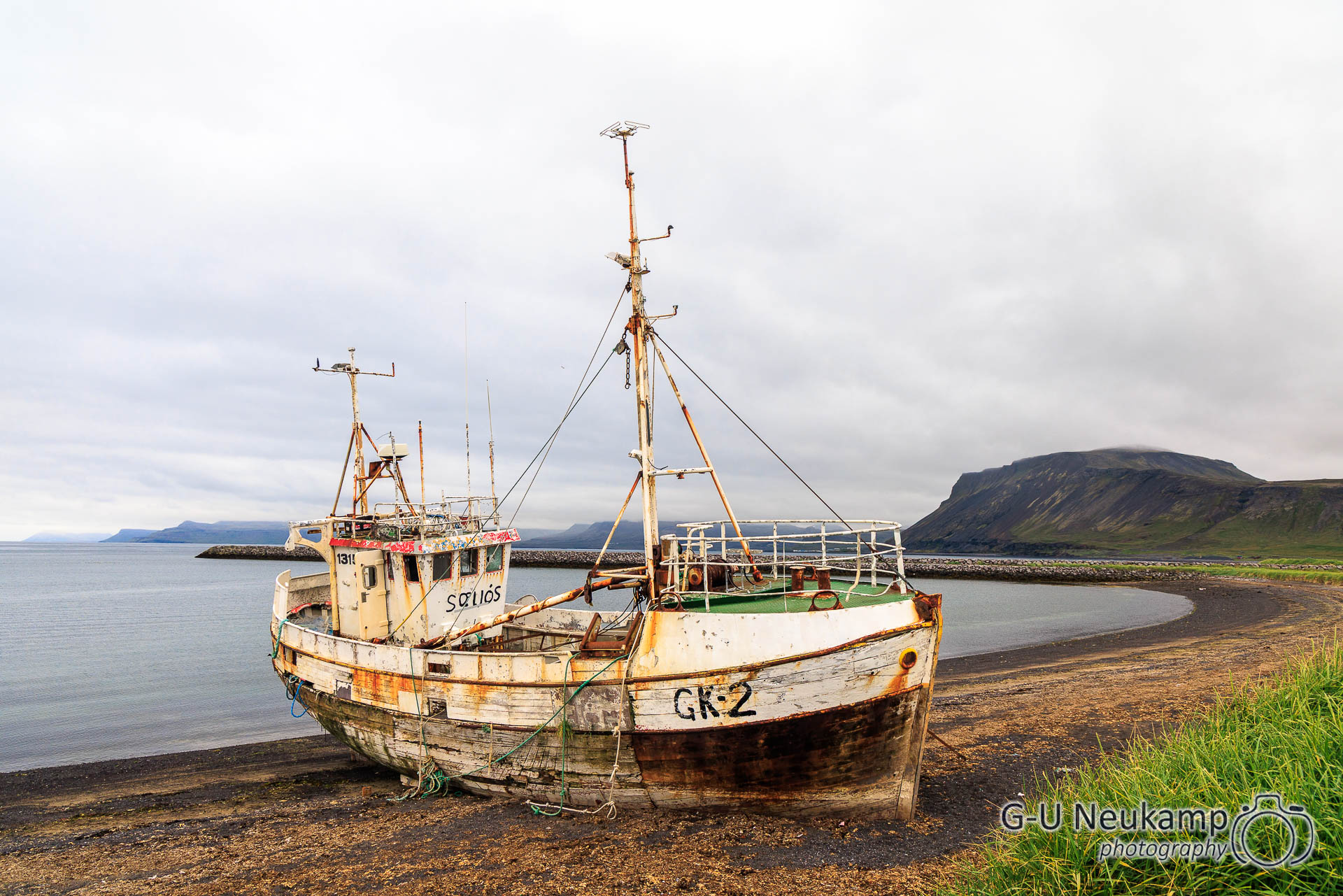
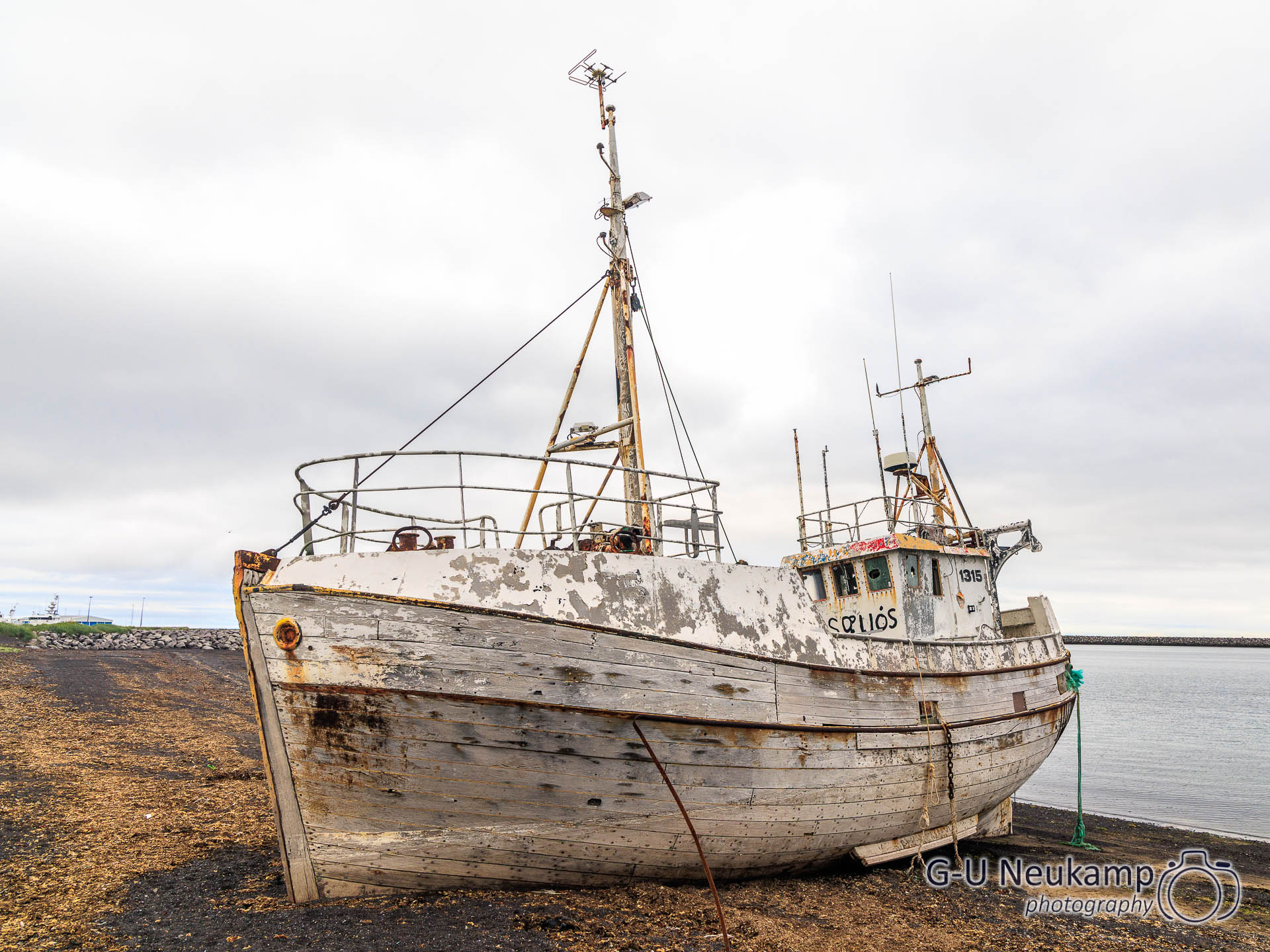
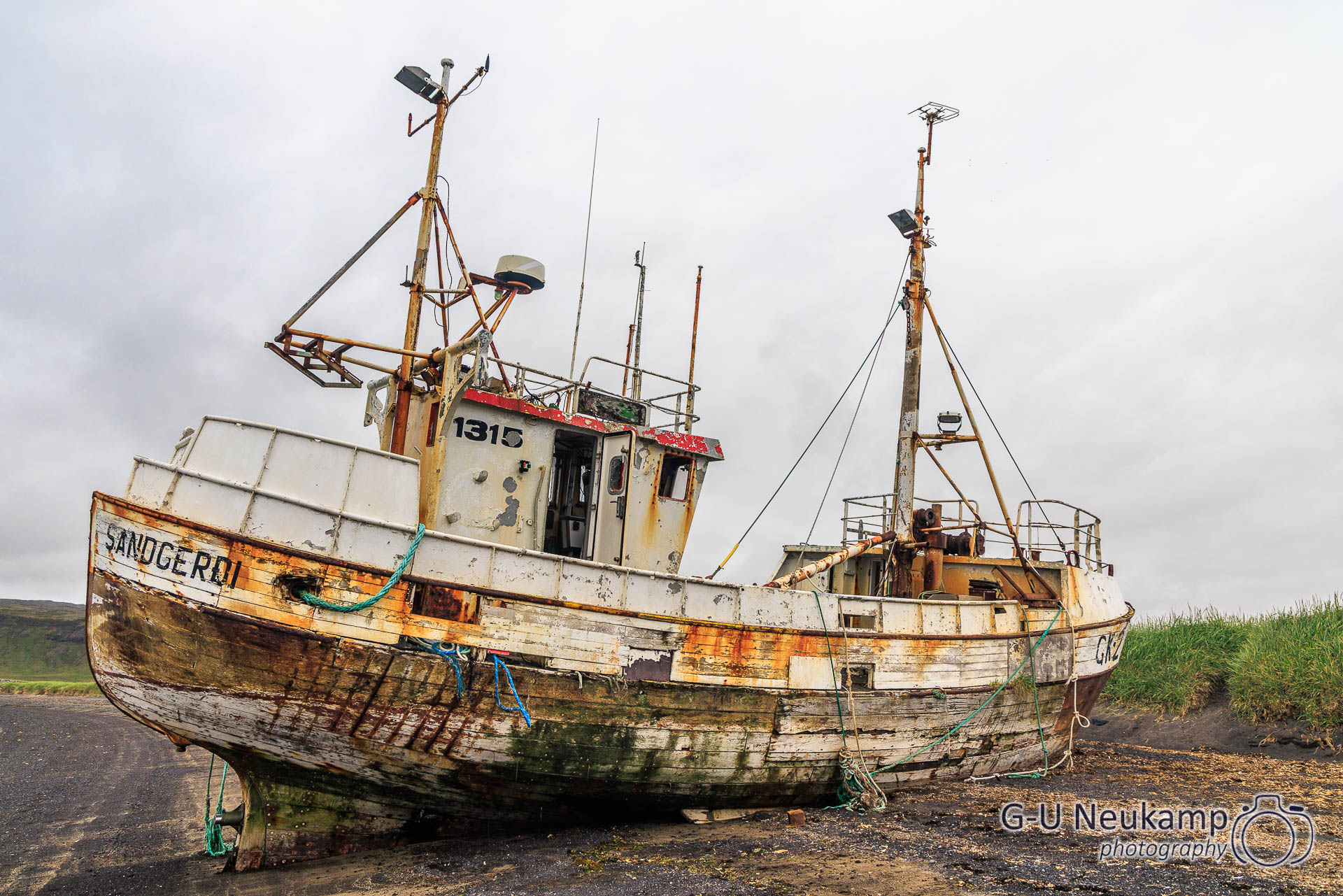
Trivia: The Sandgerði GK-2 shipwreck
The former fishing trawler Sandgerði GK-2 was built in Akureyri in 1967 and served in the fishing industry for decades. After sustaining damage in 2017, it sank in the port of Rif. After being salvaged, it was decided not to repair the ship, but to run it aground on the black sand beach between Ólafsvík and Hellissandur.
Today, the wreck lies half buried in the sand and is slowly rusting away—a silent memorial to the harsh life of seafaring.
Then we headed on to Grundafoss. This waterfall plunges 70 meters in an elegant cascade. The parking lot is located right on the road, from where you have to walk about 1 km past a water conservation area to reach the waterfall. On the way there, we encountered some sheep again.
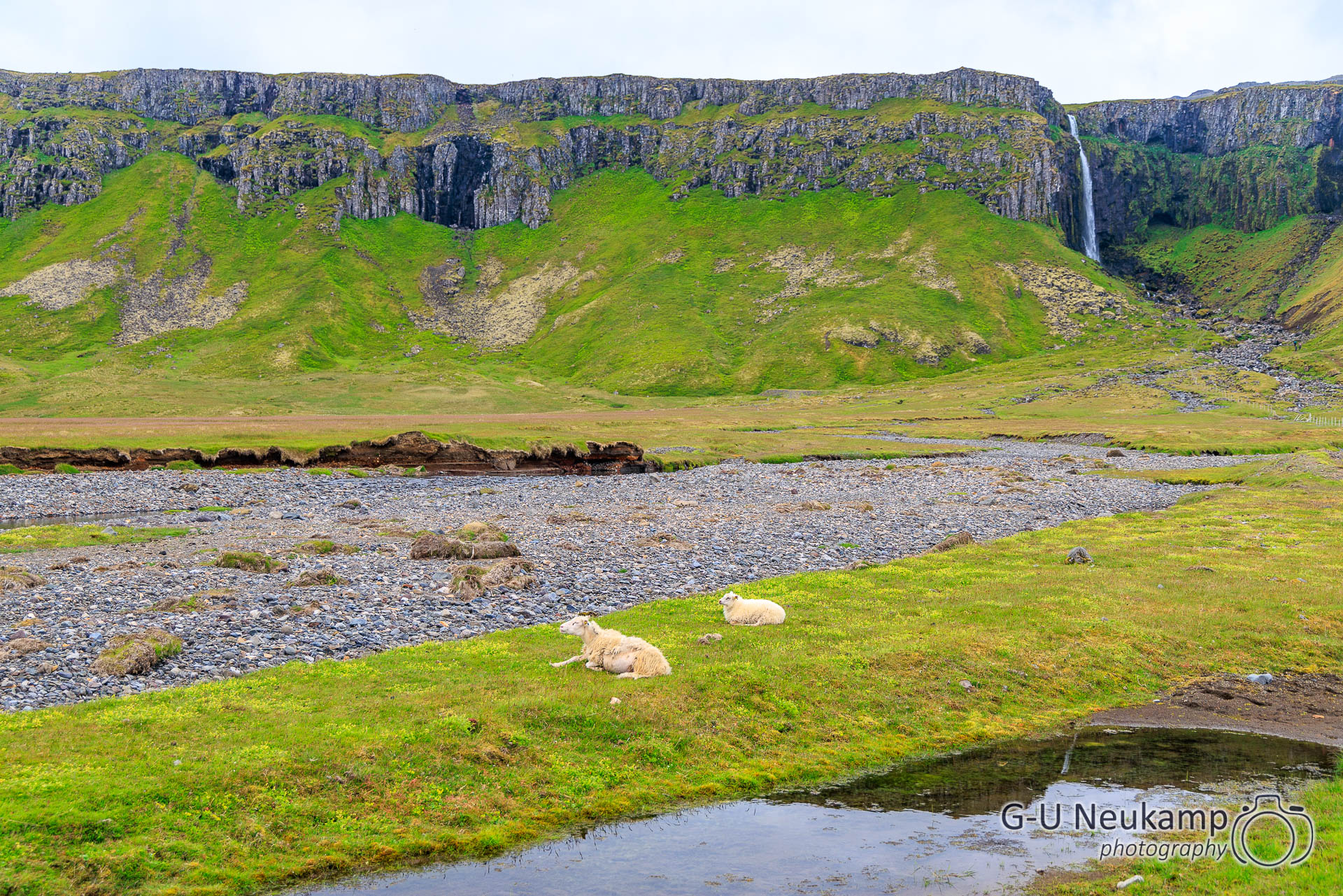
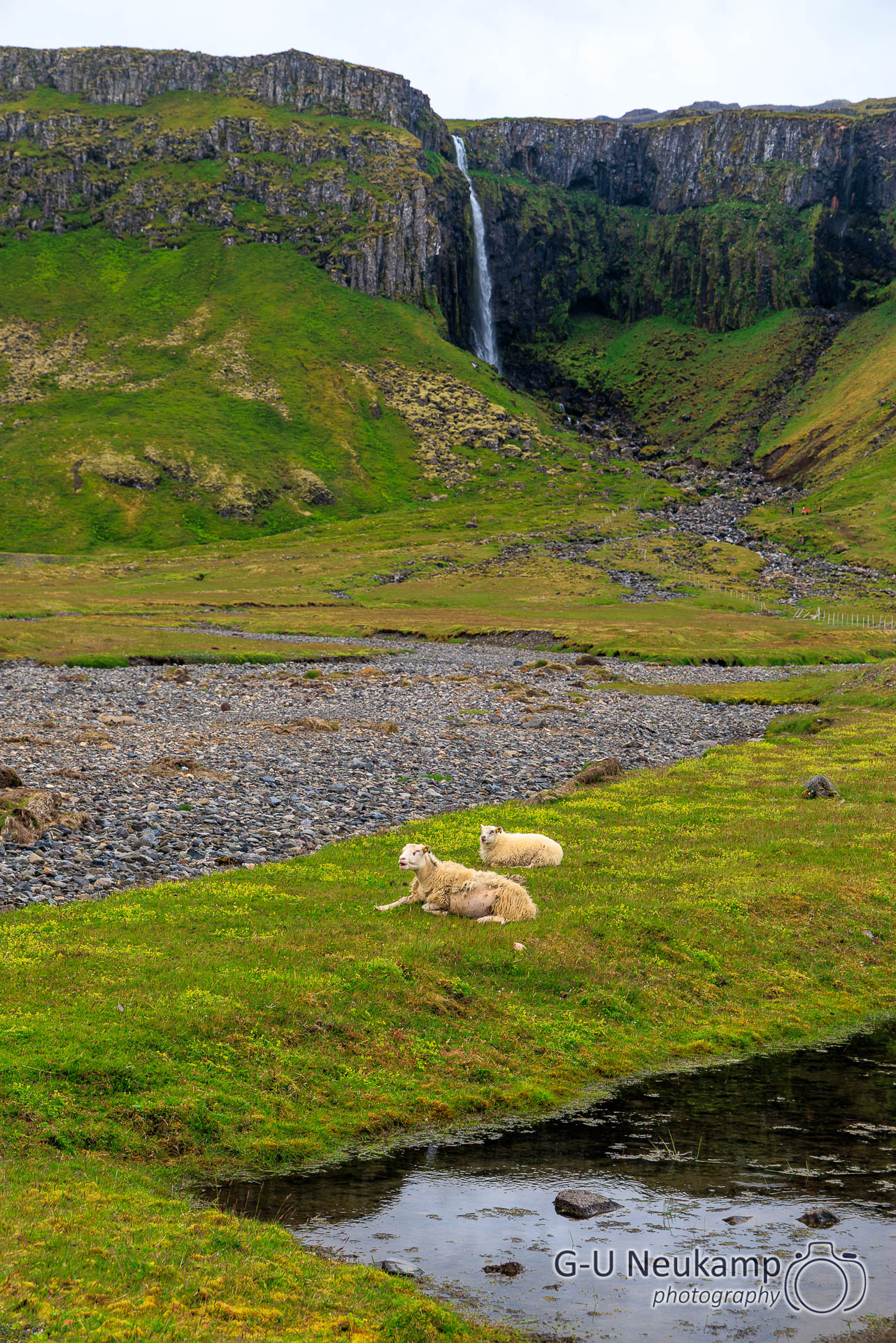
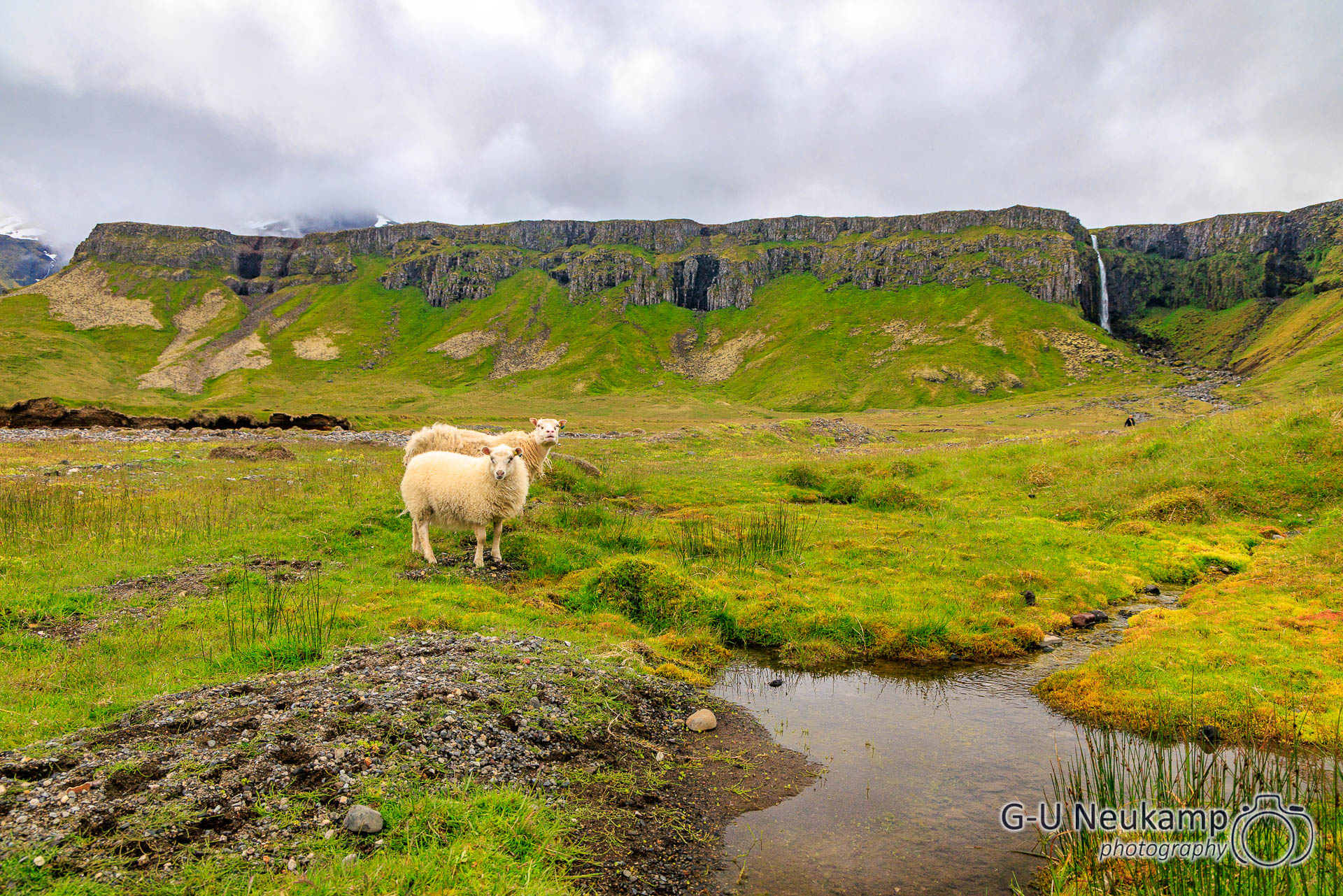
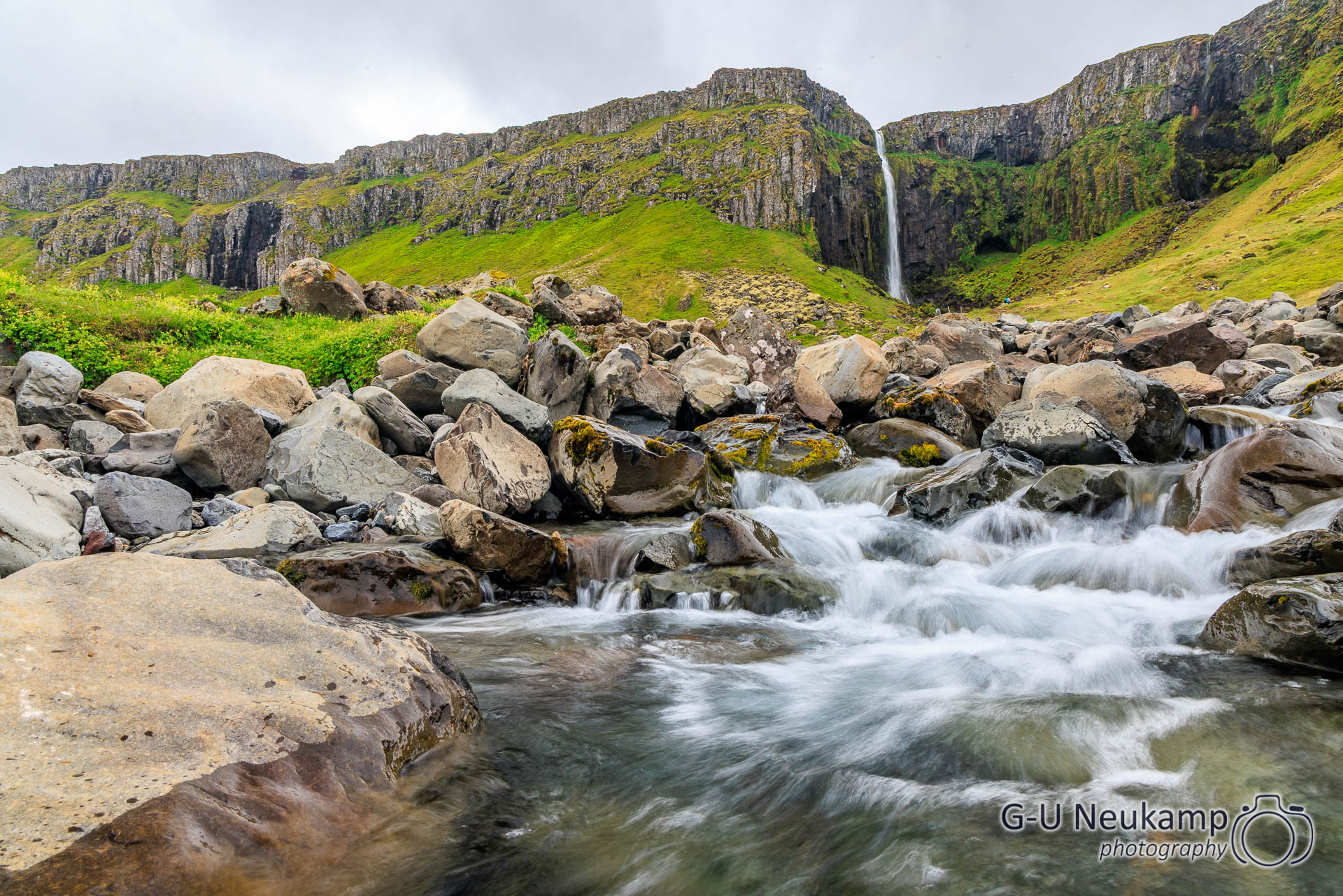
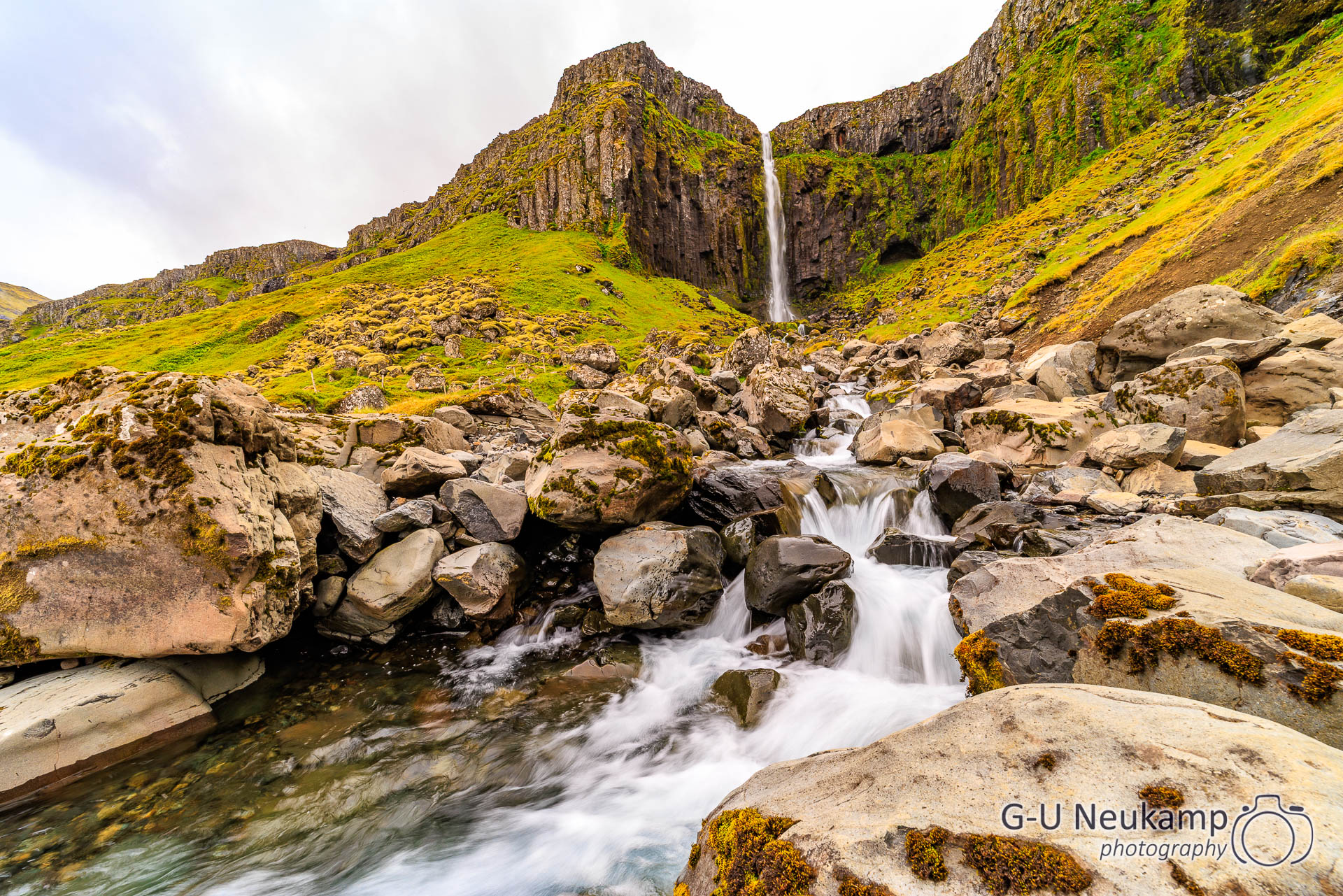
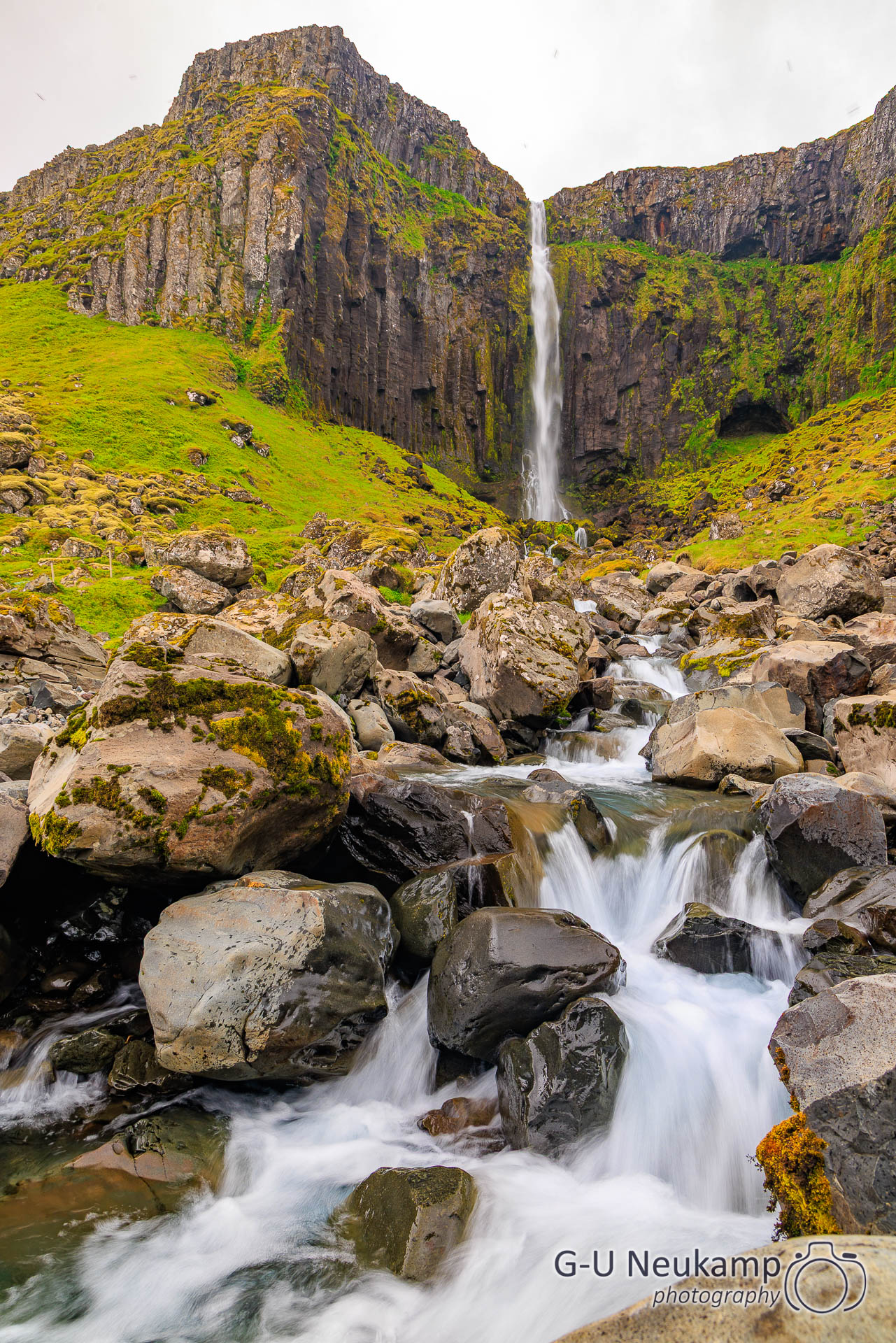
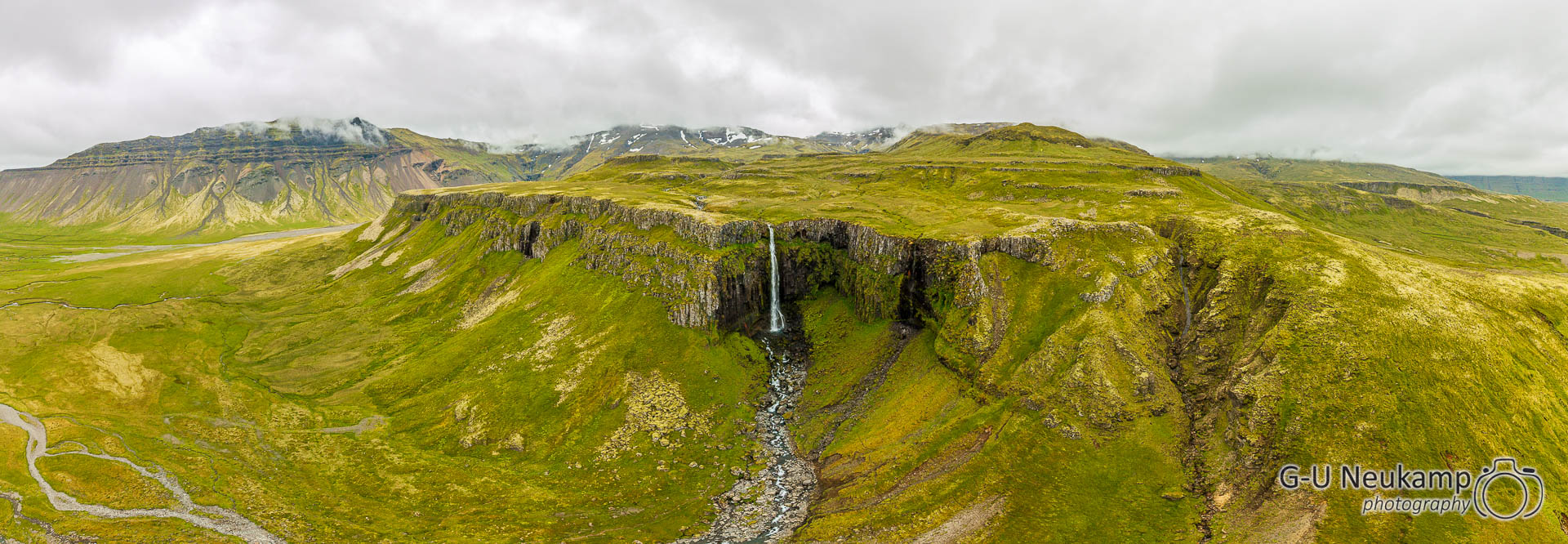
We then continued westward on the ring road. With slightly higher clouds than the day before, we were finally able to admire Kirkjufell in all its glory.
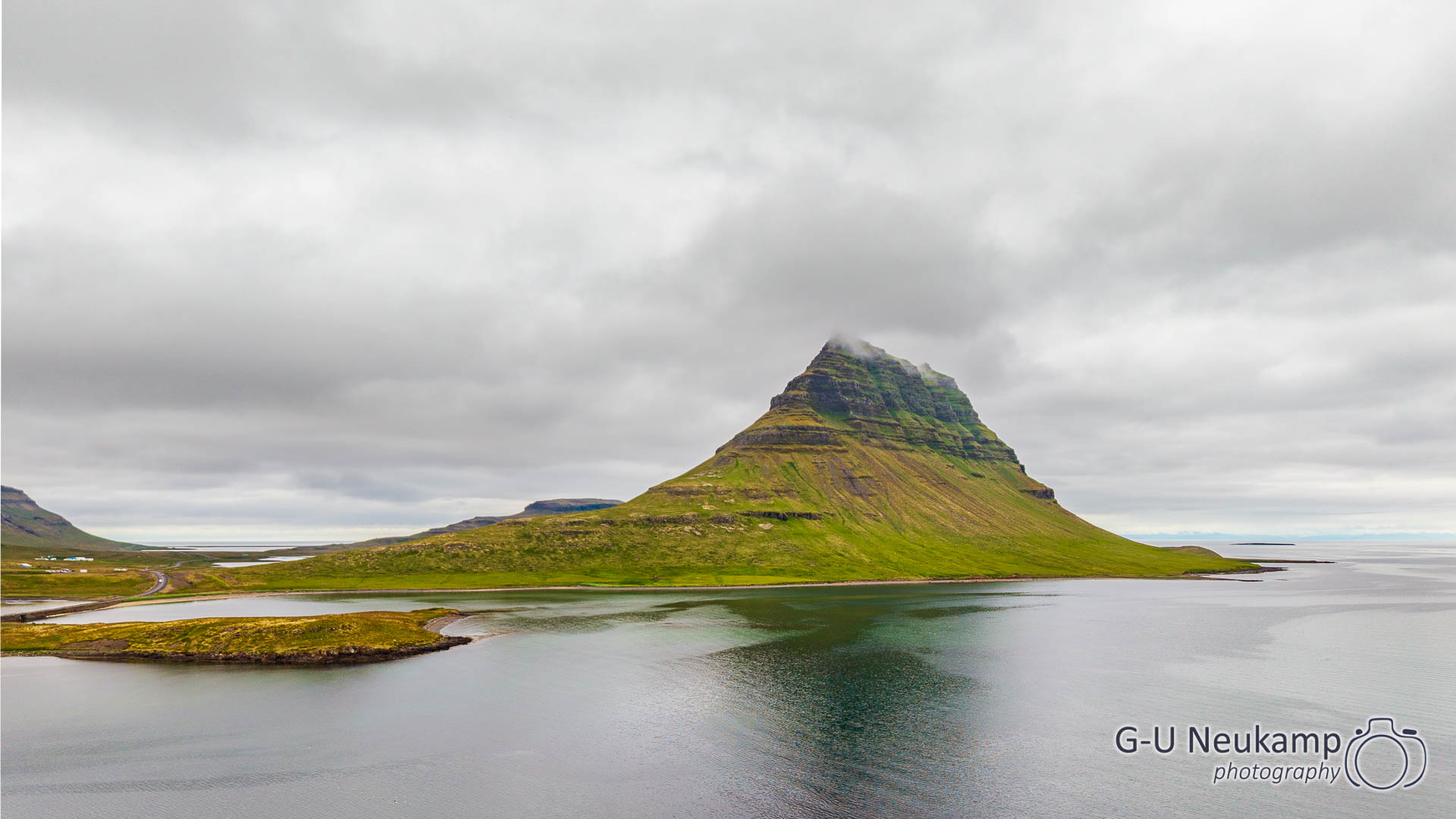
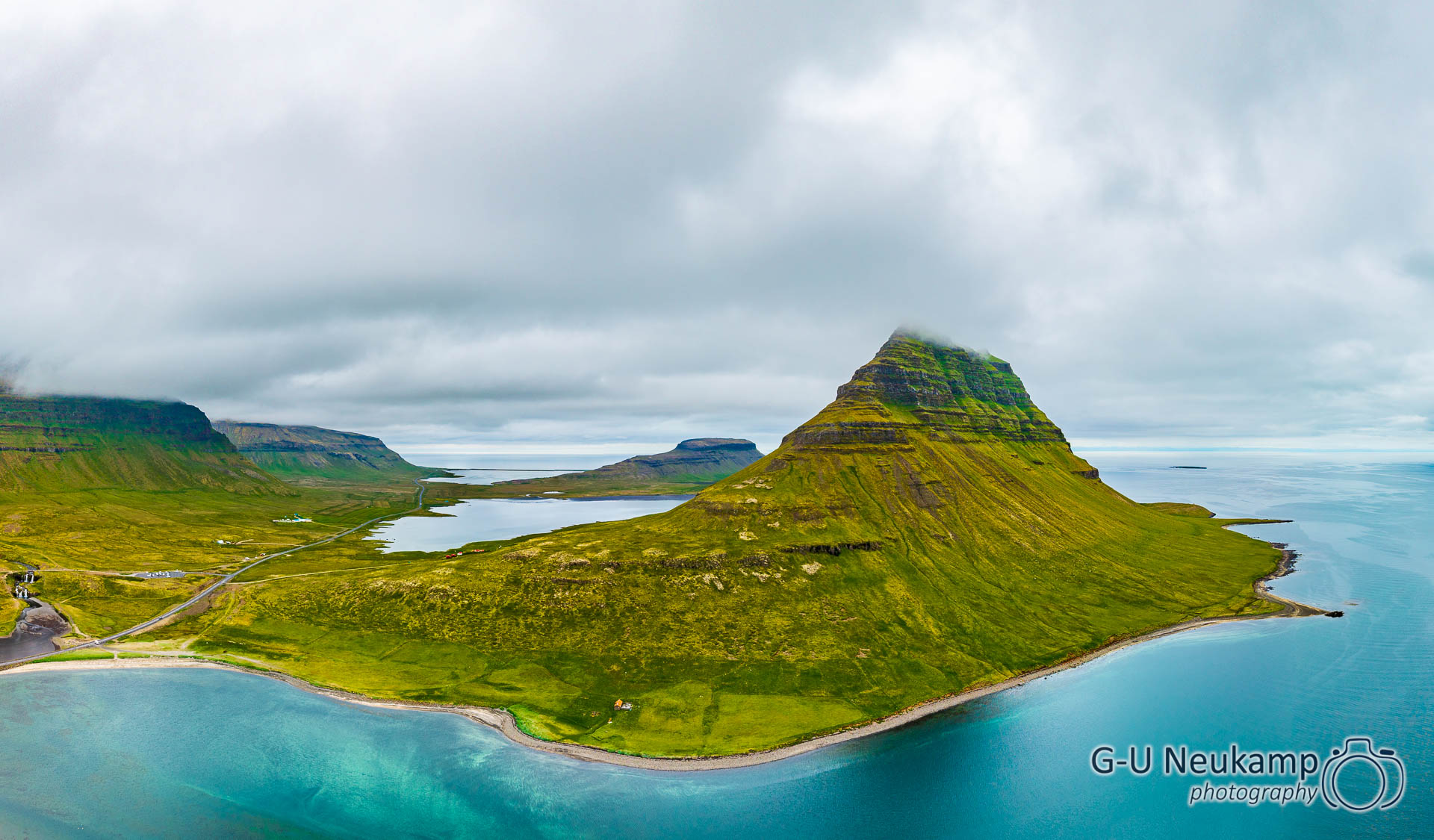
Next, we continued on to the Svörtuloft lighthouse. This was accessible via a winding gravel road, which was another adventure in itself. It shines in a bright orange color - after all, a lighthouse should be easy to see. Unfortunately, it started raining again and really poured down.
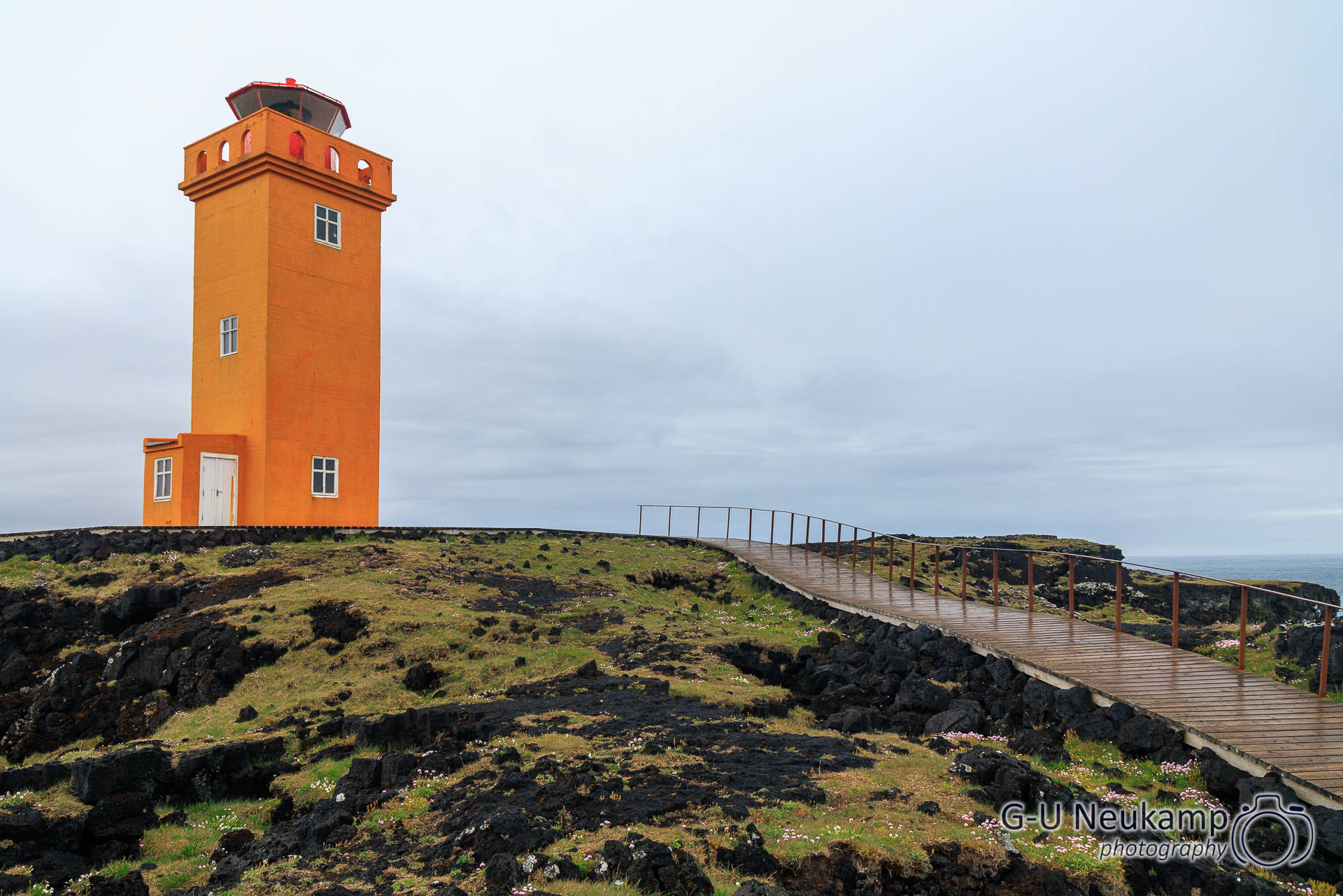
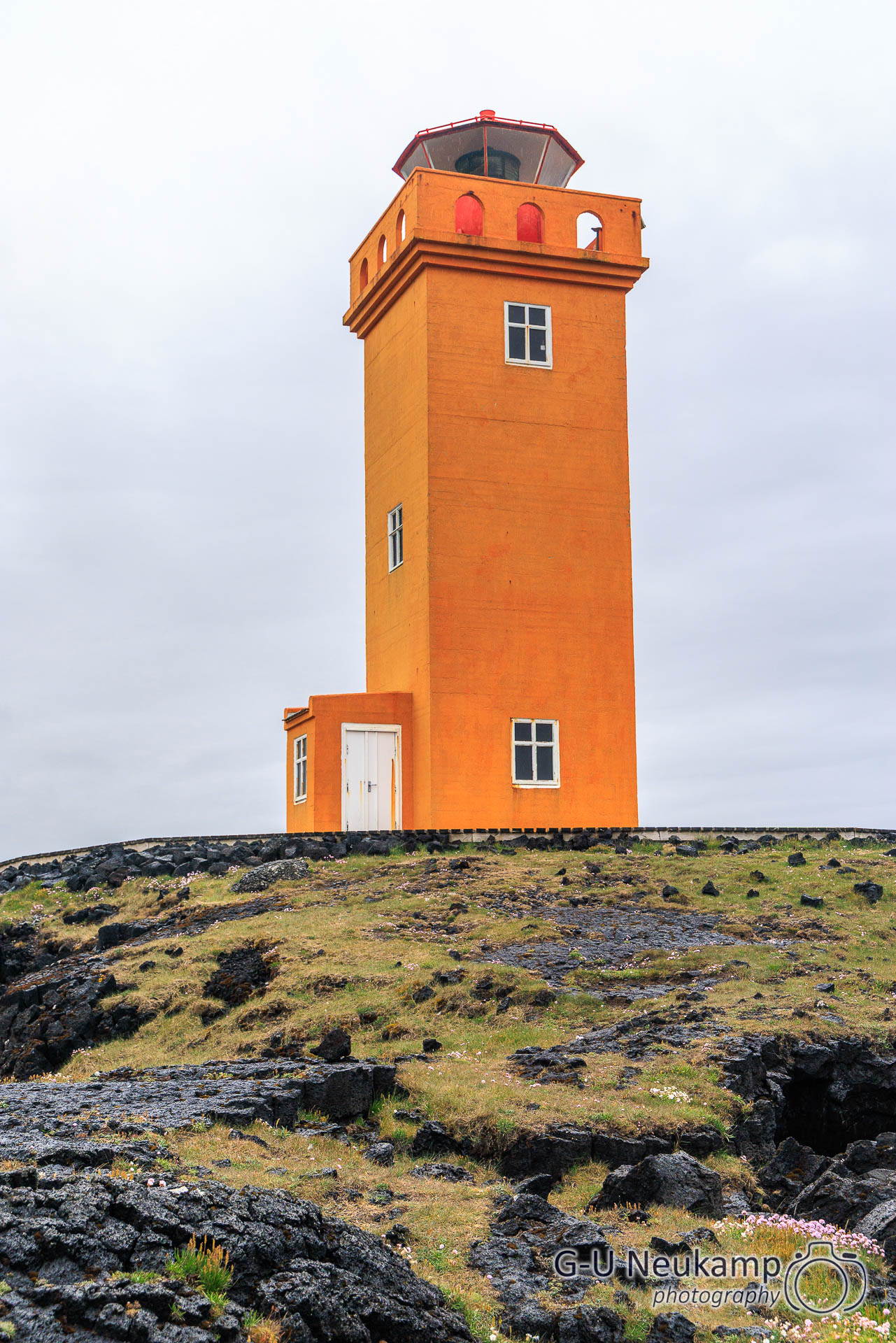
But we had our café with us and first retreated to the camper for coffee and pastries. We had originally planned to continue on to the Saxhóll crater, but in this rain?
Later, we decided to give it a try as the rain was slowly dying down. The weather in Iceland is very difficult to predict!
The crater is easy to access, with a convenient iron staircase leading up to it. From the top, you can look down into the crater (which is not particularly deep) and, above all, enjoy the view of the barren, lichen-covered landscape surrounding it.
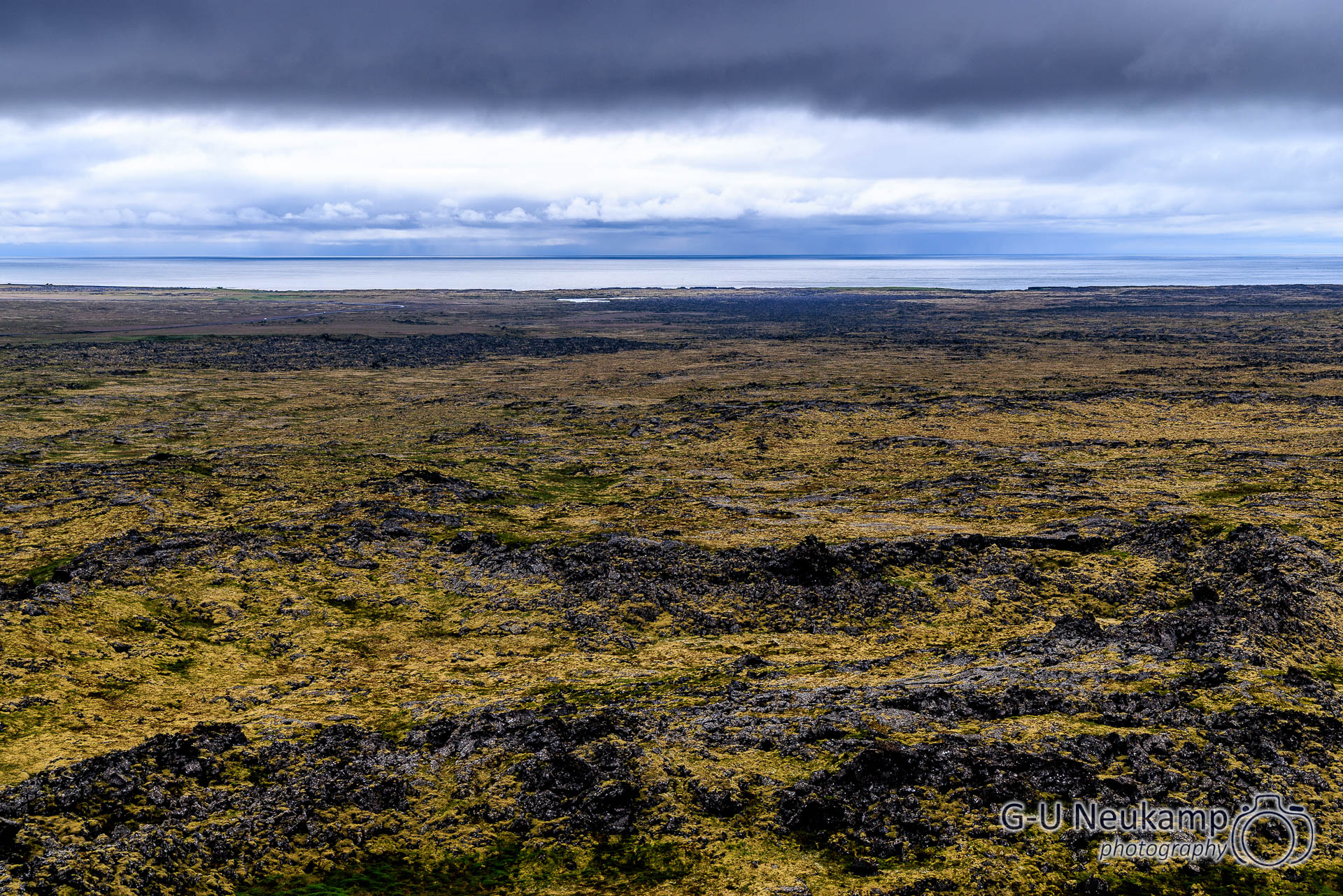
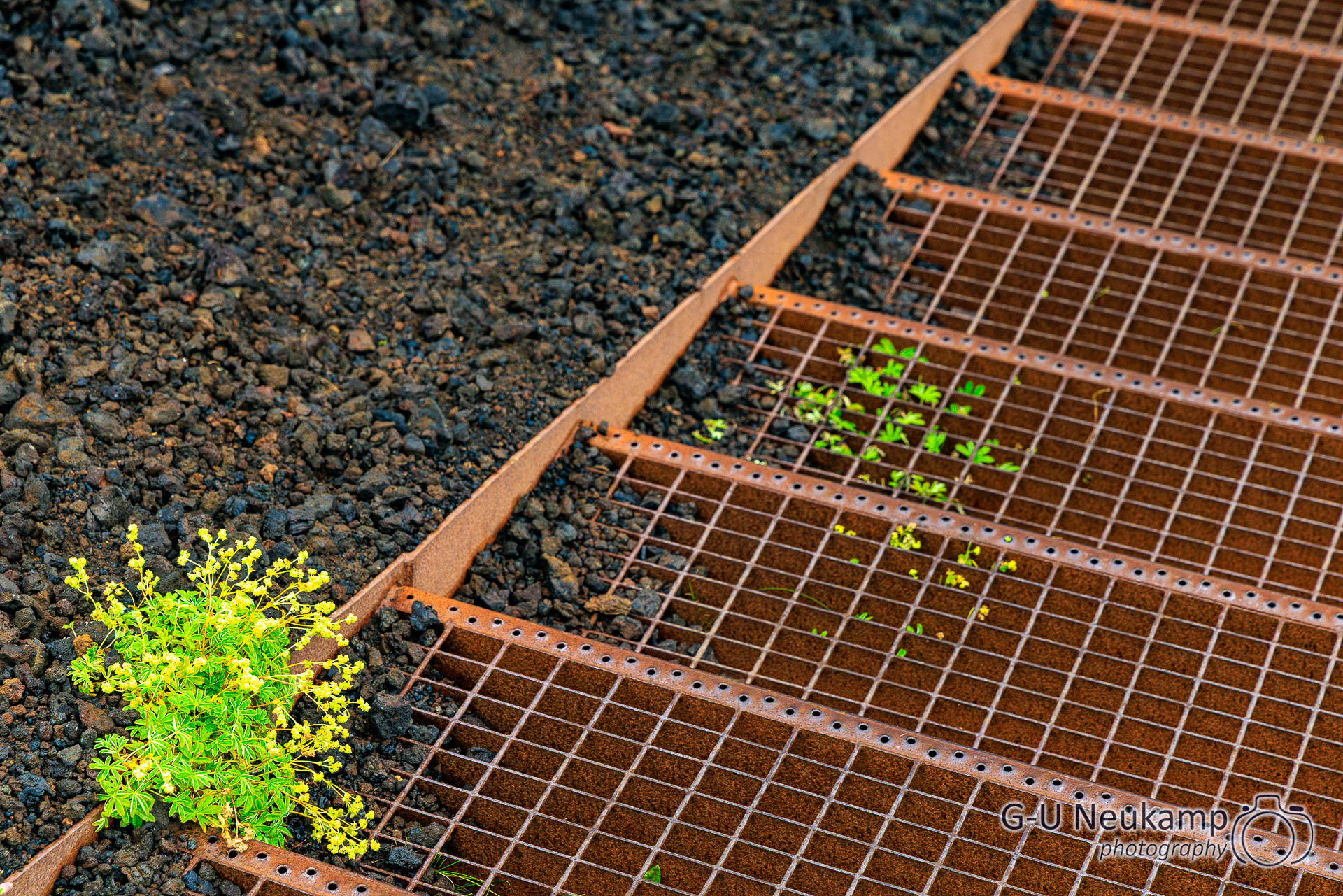
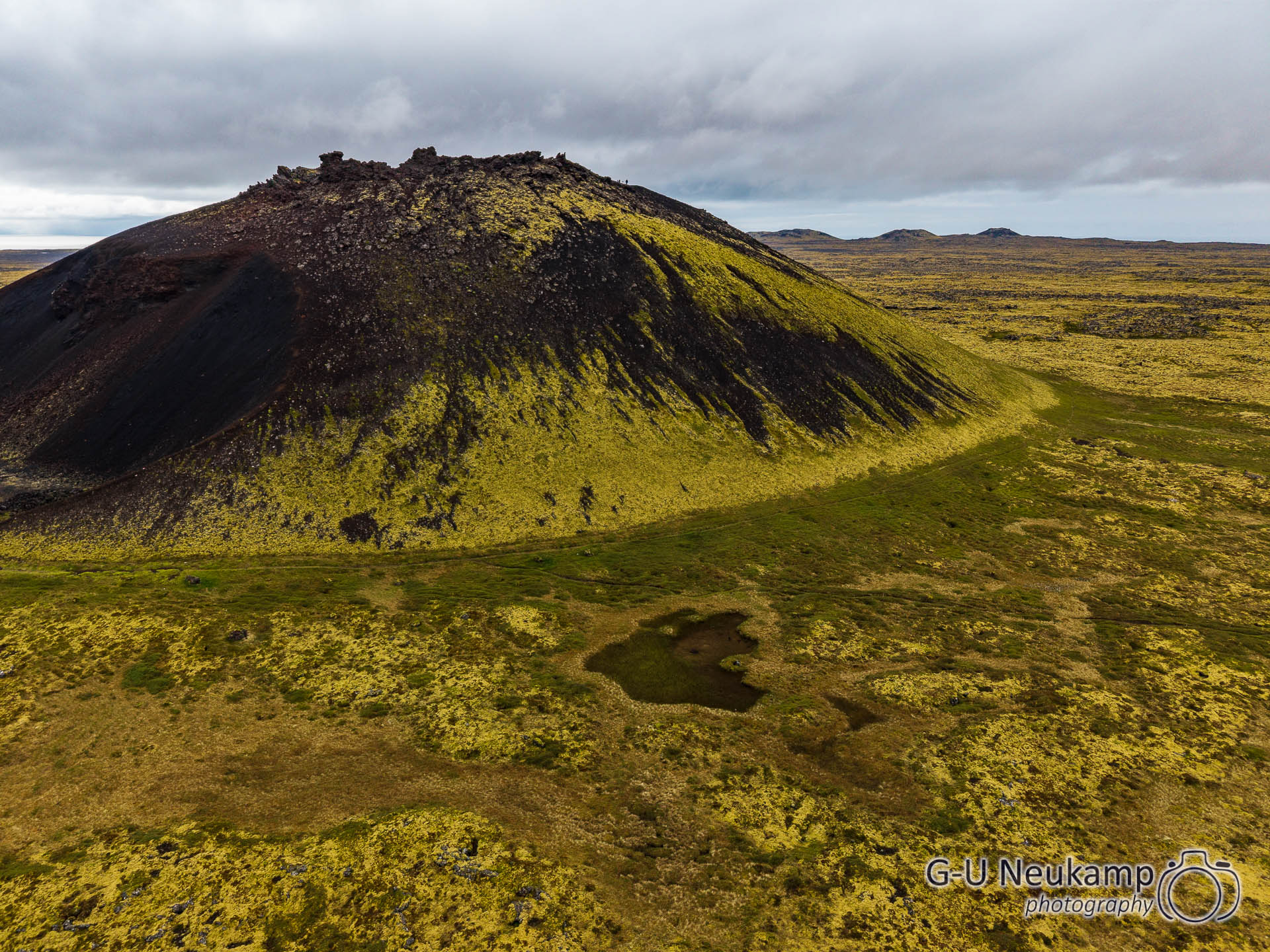
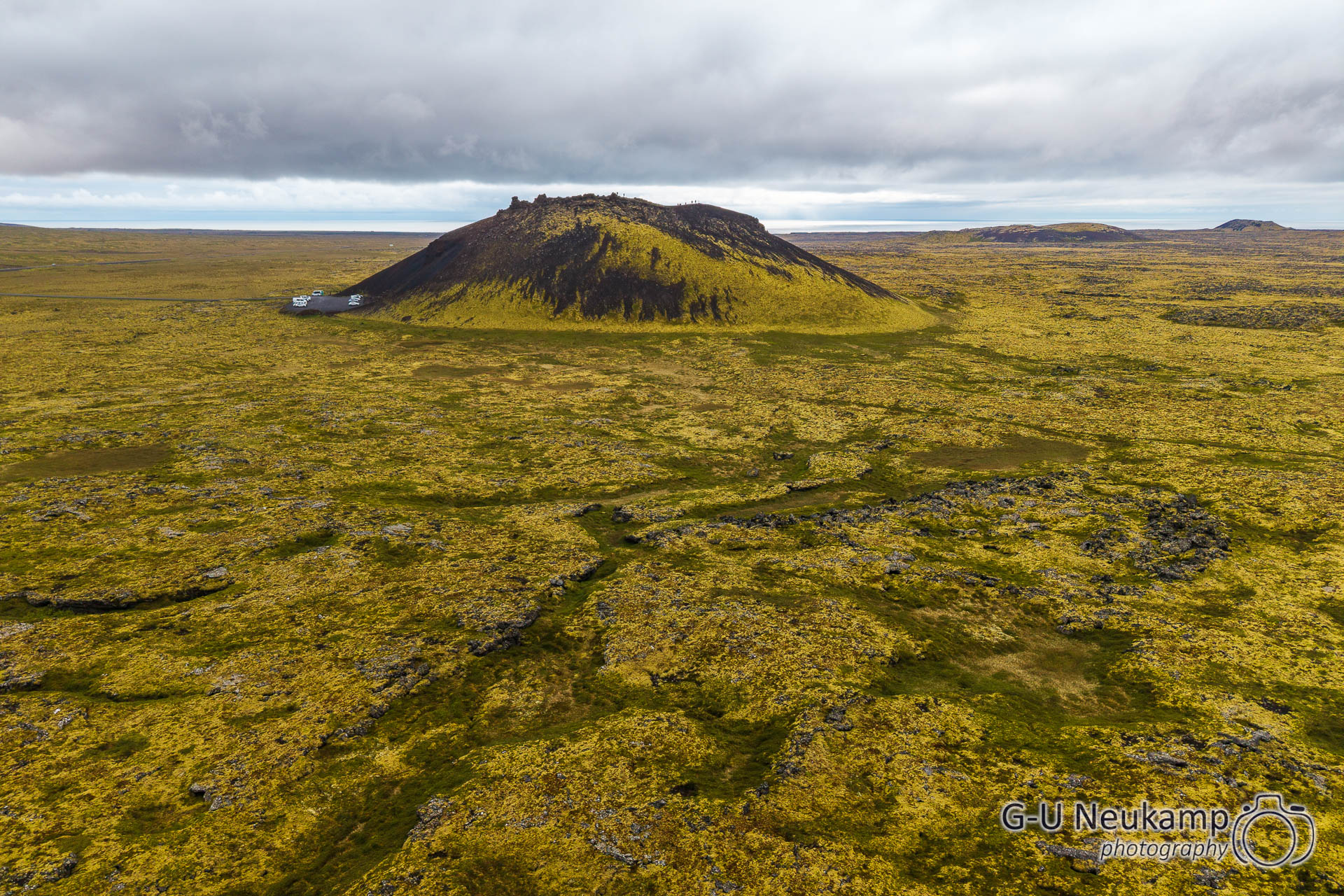
Then we continued on to the next lighthouse, Malarrif, on the south coast of the peninsula, this time white and slightly taller. Once again, there were a few sheep around, some of which posed nicely for the camera:
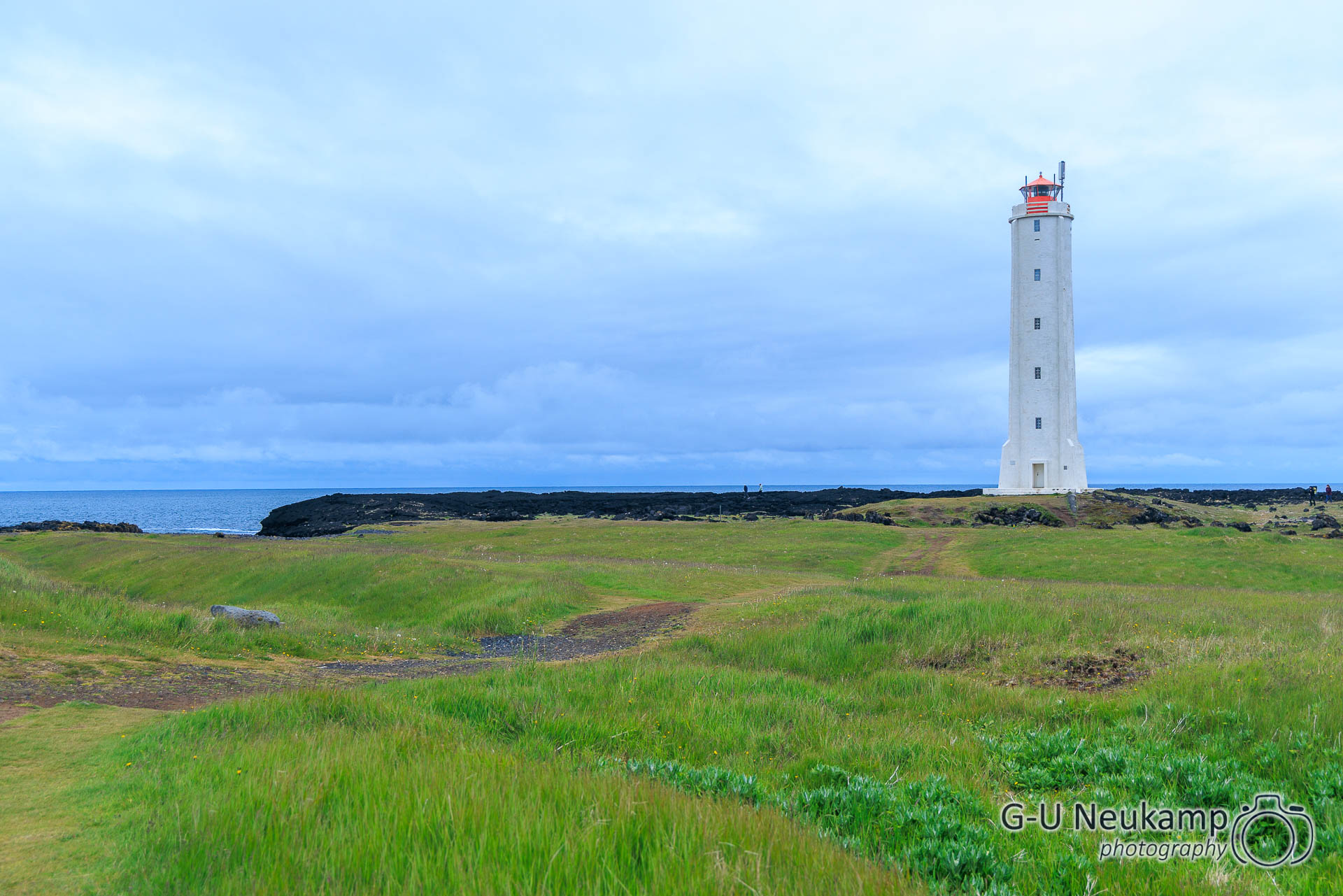
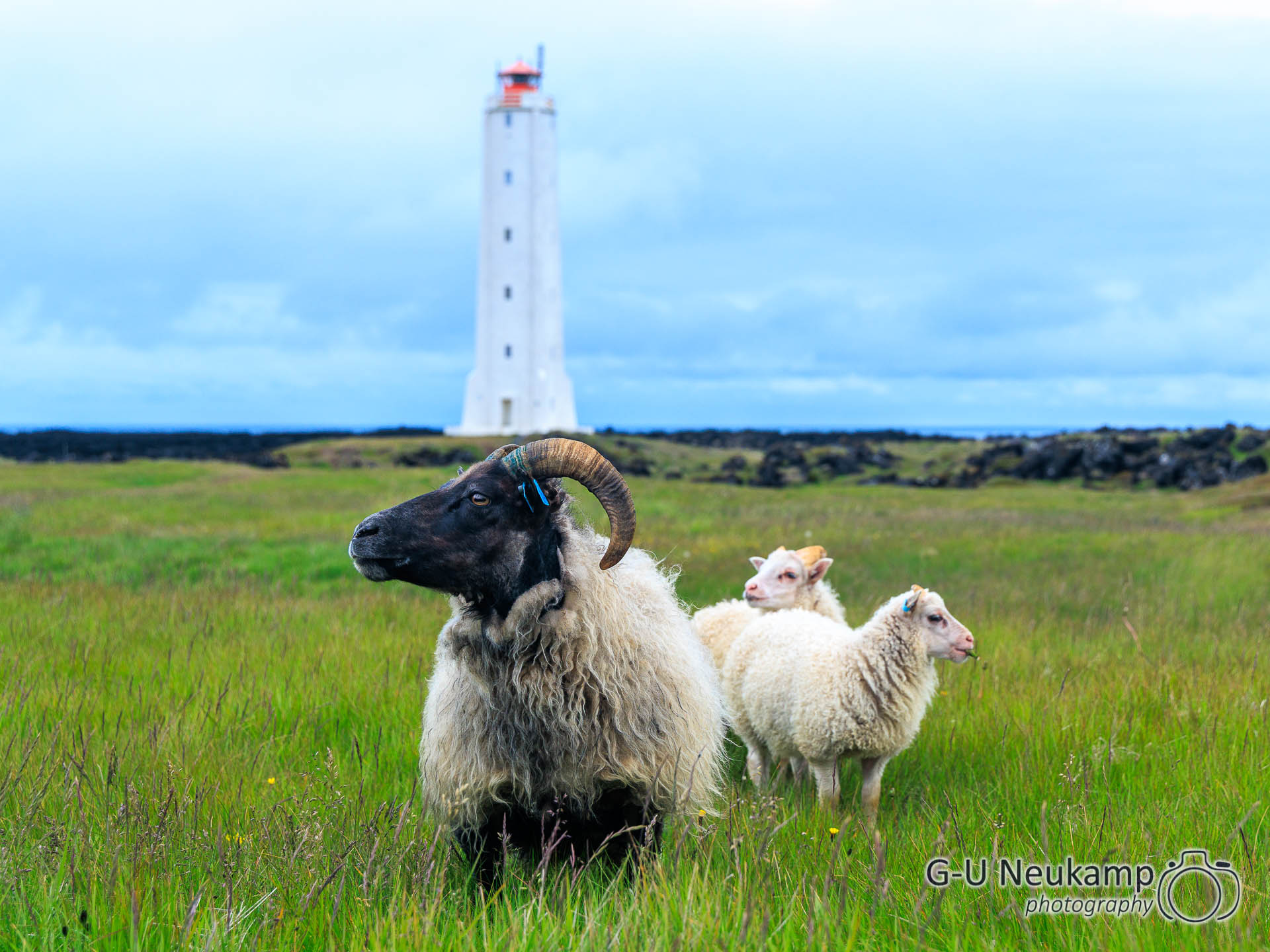
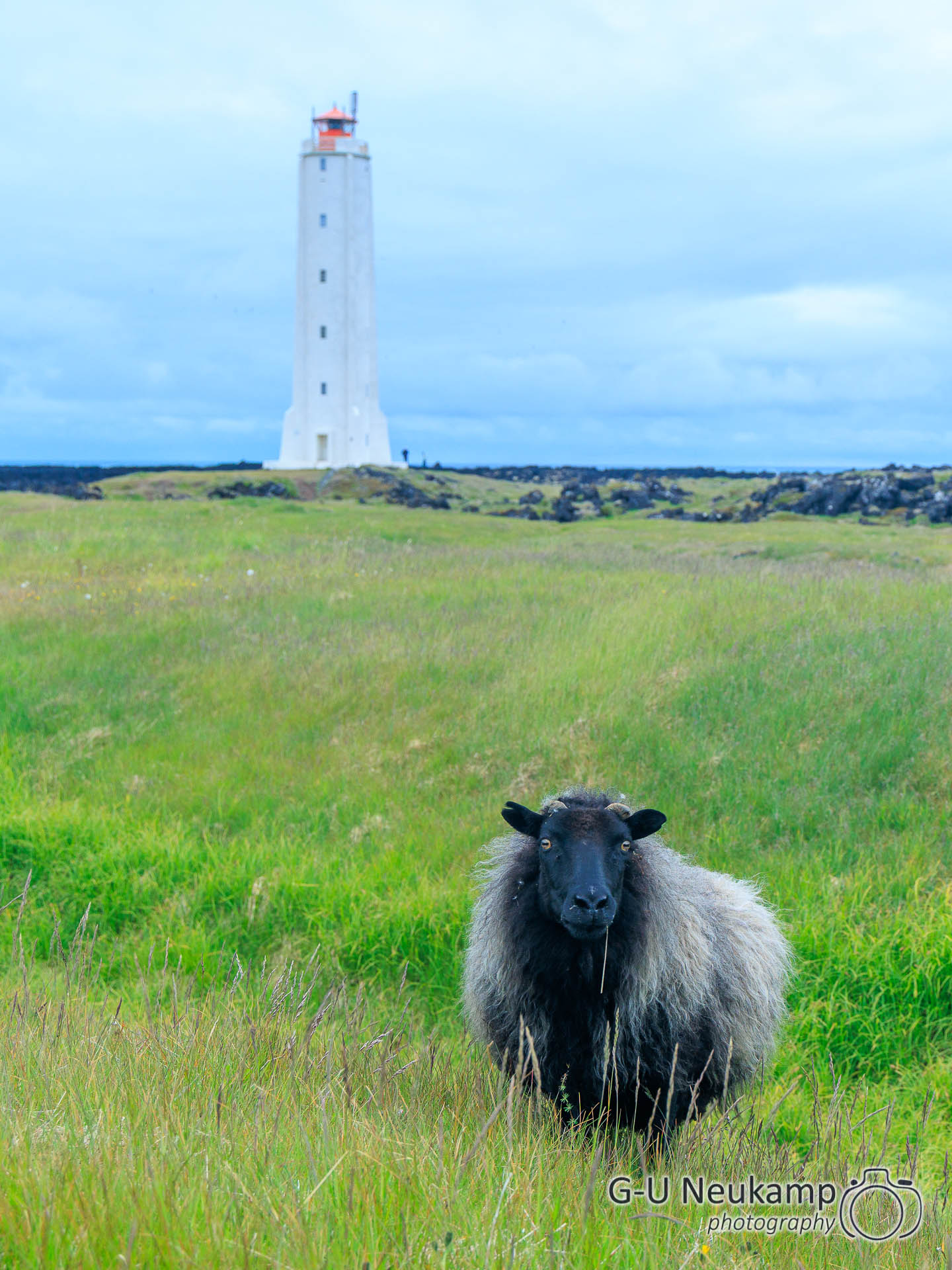
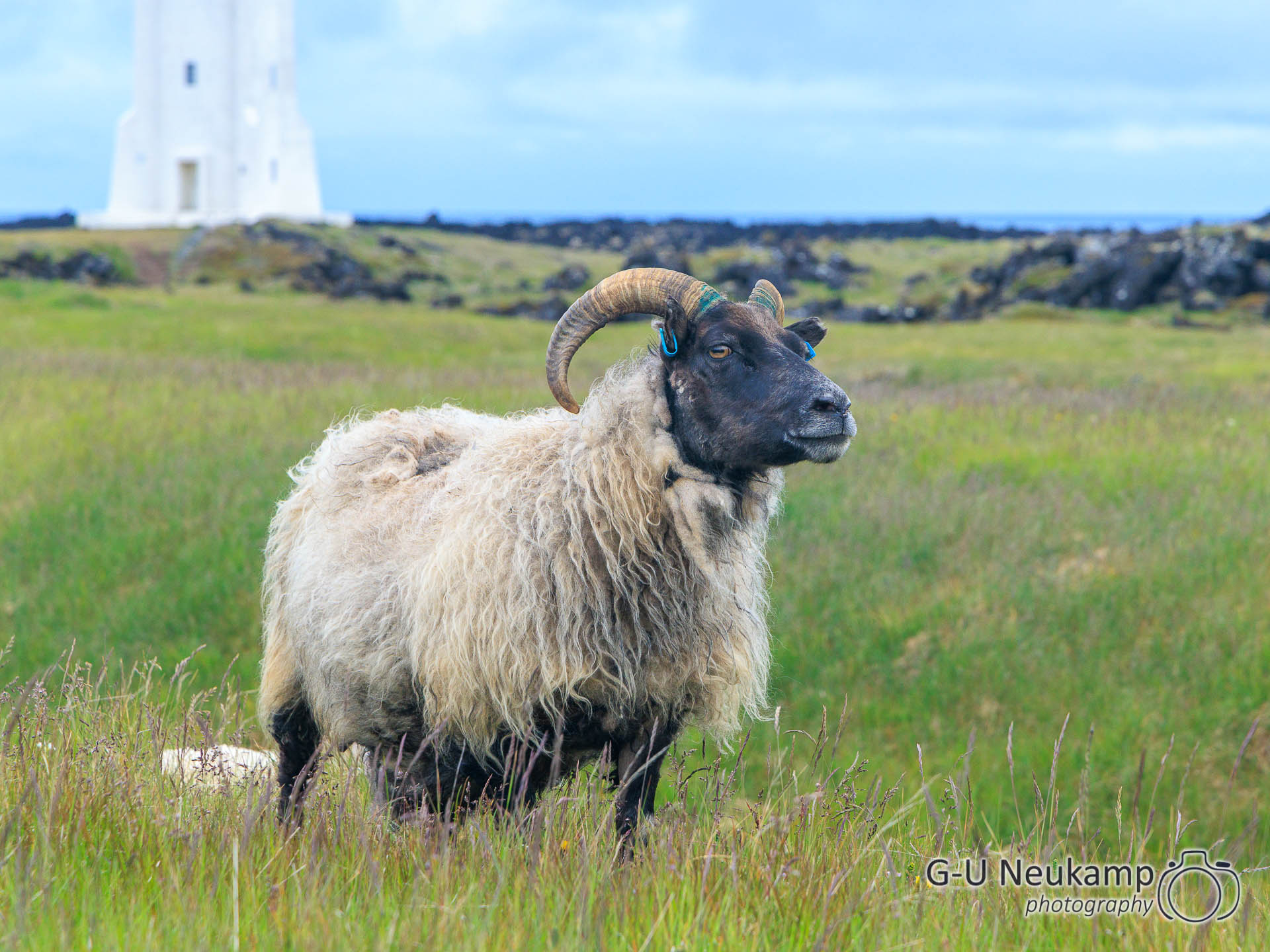
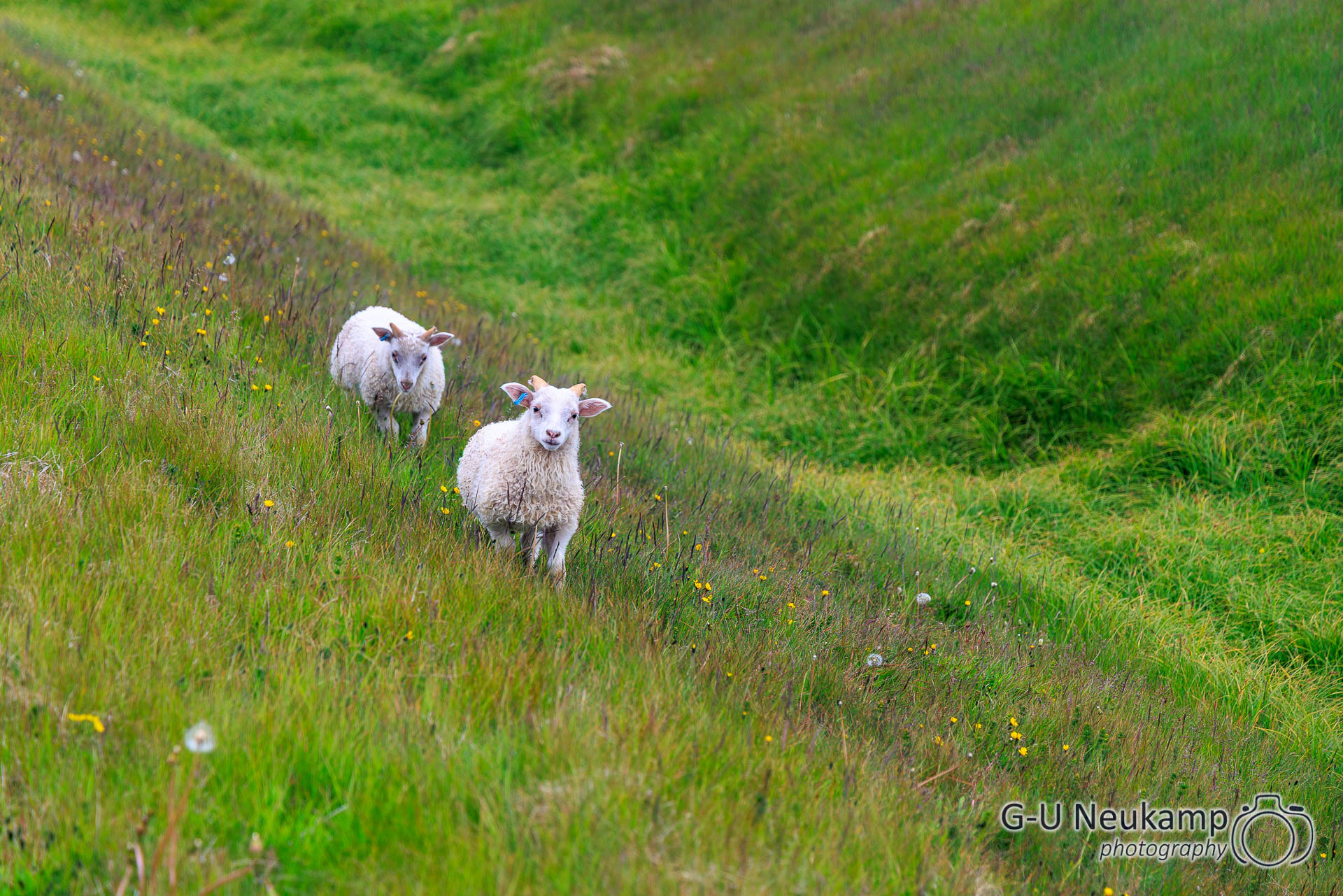
I particularly like this picture of “Toothpick Charlie”:
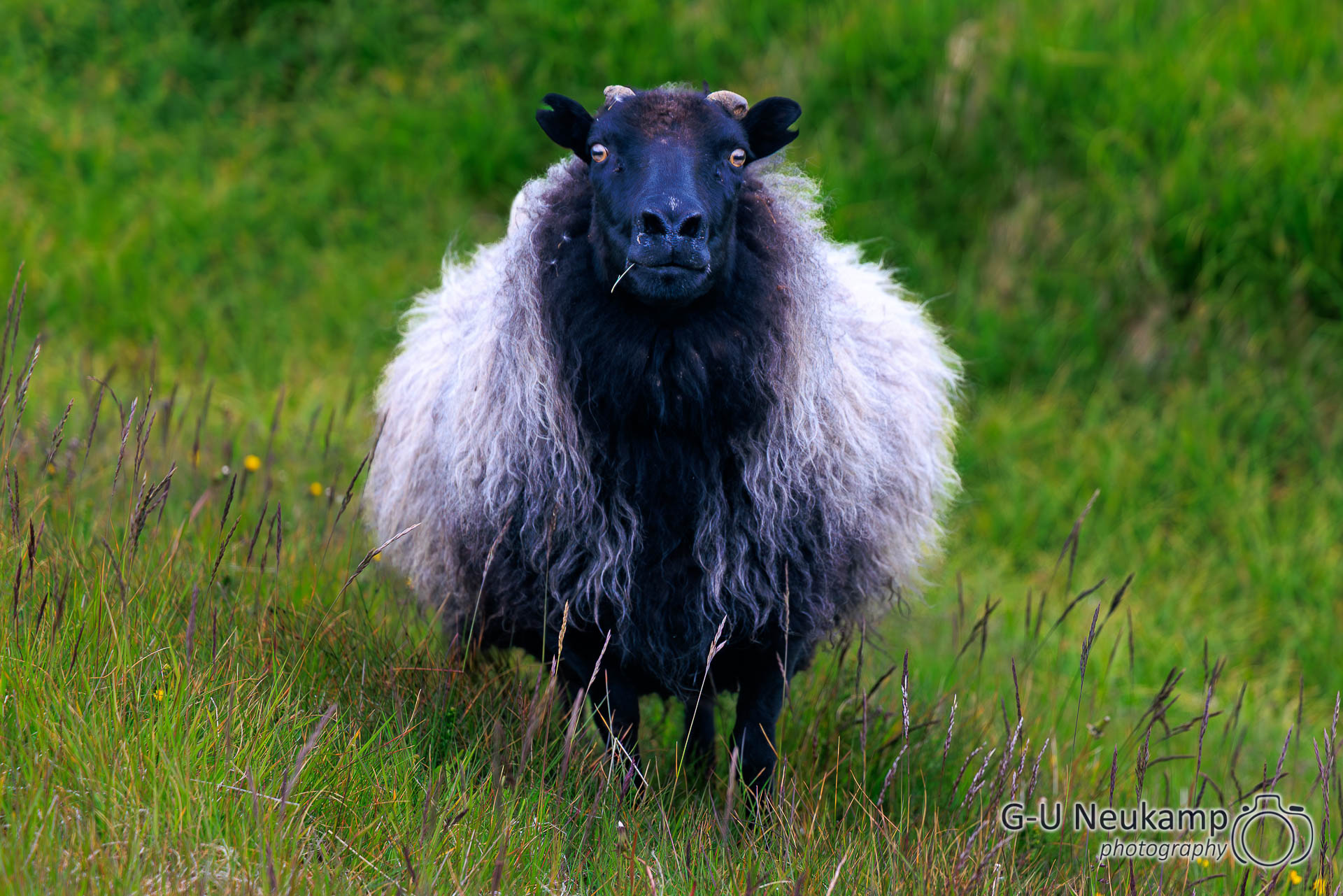
We continued on to Anarstapi. There is a large stone guardian there, Bárður Snæfellsás. Impressive.
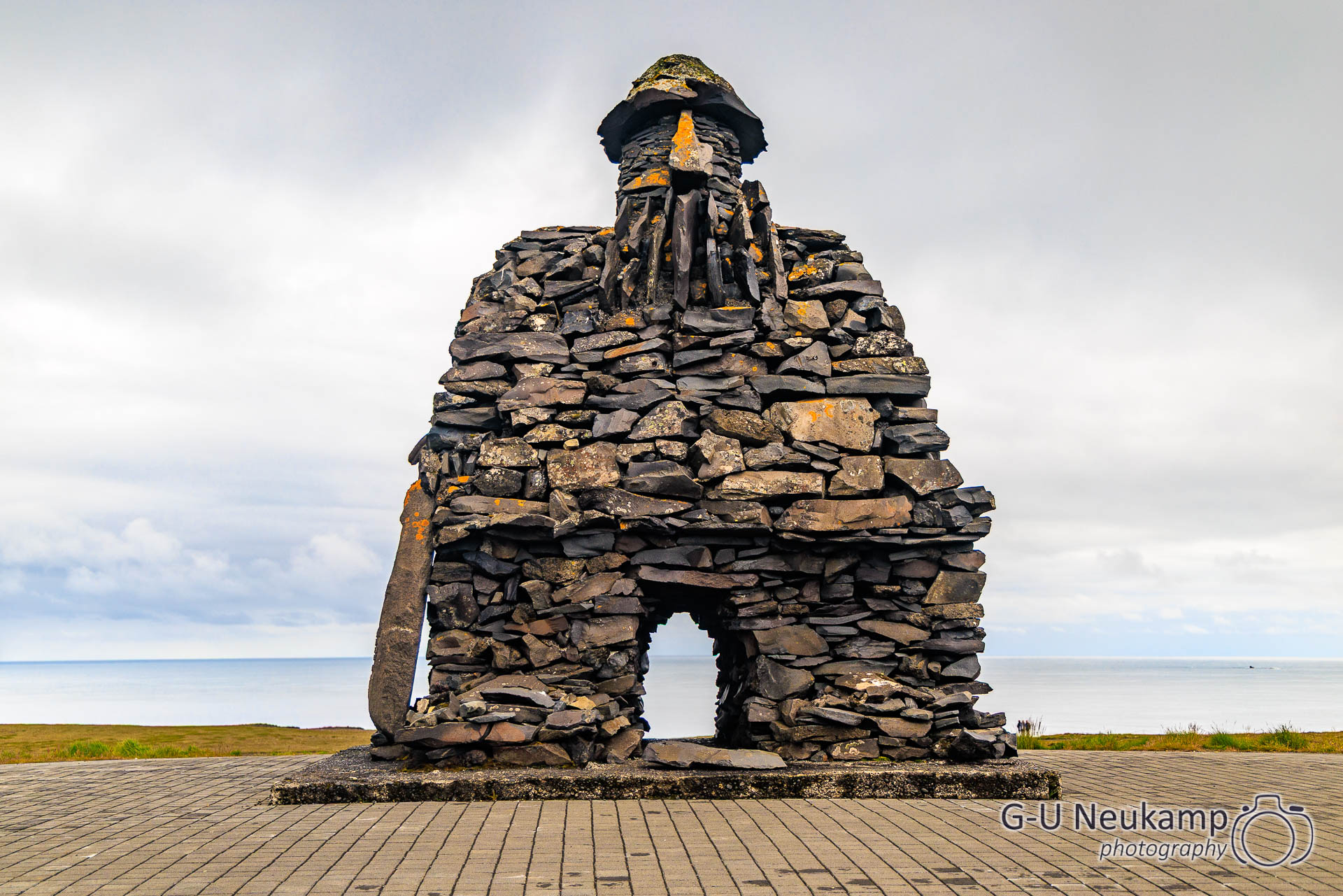
Trivia: The mighty Bárður Snæfellsás, half human, half troll, is considered the guardian spirit of Snæfellsjökull. He is said to have once lived in caves, bathed in a maar, and protected the people of the region - until he finally disappeared into the glacier, where, according to legend, he still watches over it.
The path led down to a viewpoint that offered a view of the rugged cliffs and the rock gate. Numerous nesting birds were bustling about on the rocks.
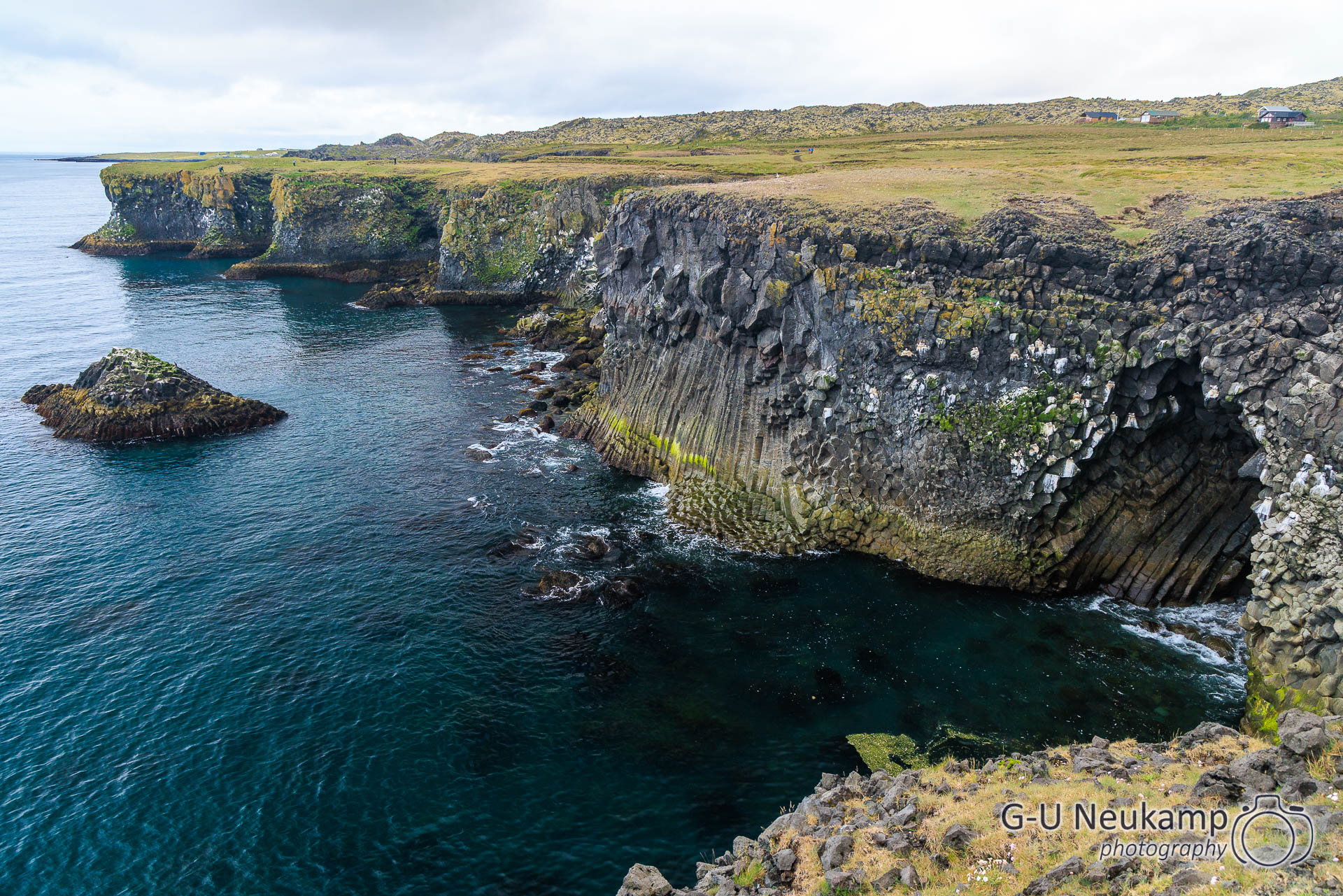
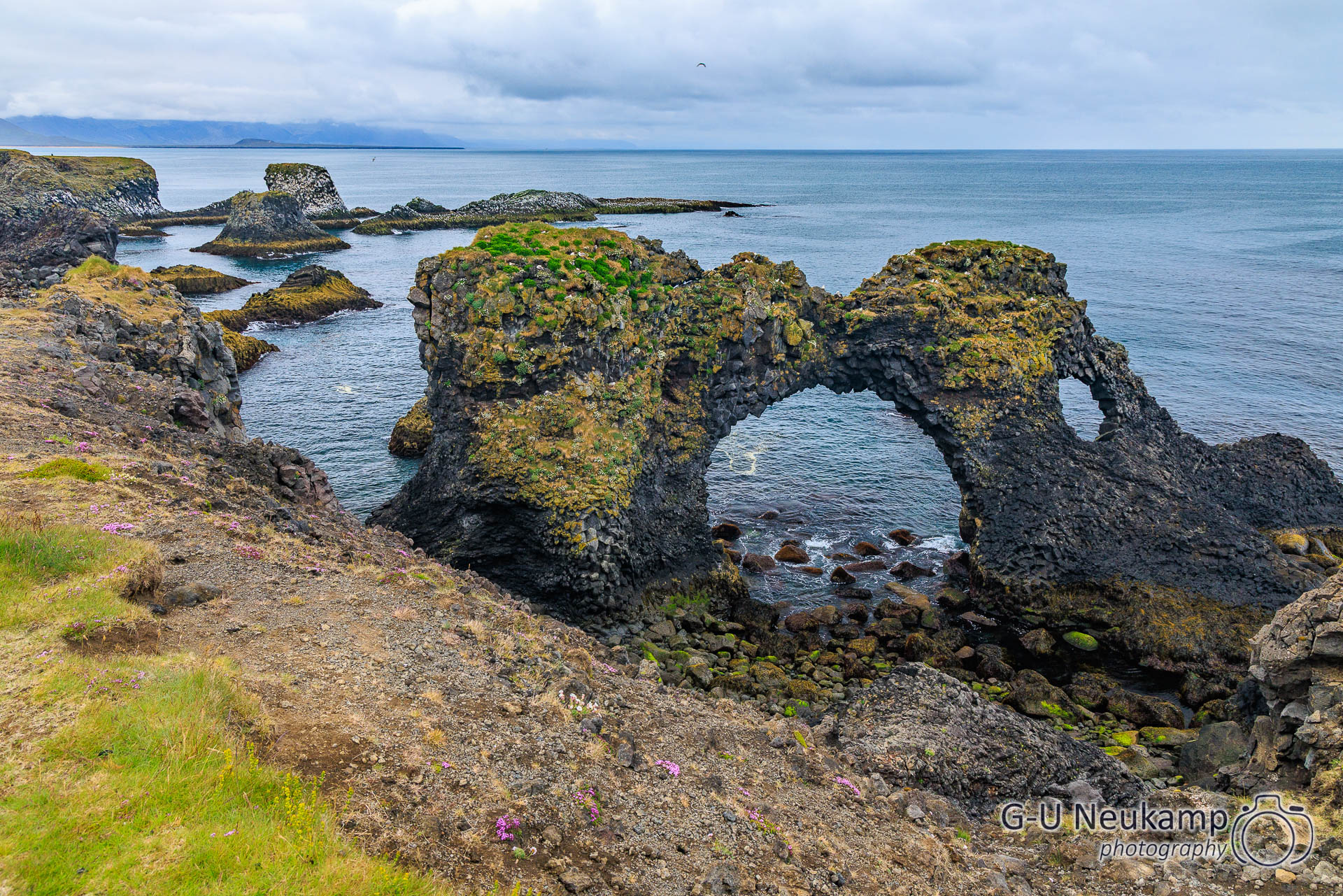
Then it was time to leave the Snæfellsnes Peninsula and head for Reykjavik.
With around 140,000 inhabitants, Reykjavík is not only the capital but also the largest city in Iceland. If you include the entire metropolitan area, around 240,000 people live there – more than two-thirds of Iceland’s total population. This makes Reykjavík not only the northernmost capital in the world but also the cultural and economic center of the country.
Thanks to the abundant geothermal energy, much of the city is heated sustainably, and even some sidewalks in the city center are frost-free in winter because warm thermal water circulates beneath them.
We drove into town briefly and took a look at the famous Hallgrimskirkja. Unfortunately, it was already closed as it was late. But it is also very impressive from the outside.
At 74.5 meters high, Hallgrímskirkja is Iceland’s largest church building and dominates the Reykjavík cityscape. It was named after the hymn writer Hallgrímur Pétursson. It is Iceland’s largest church building and the second tallest building in the country. Planning began in 1929, construction started in 1945 and continued until 1986. Architect Guðjón Samúelsson took his inspiration from Icelandic basalt columns and glaciers. Inside, the church is bright and simple in design, with Gothic elements such as pointed arches and ribbed vaults. Particularly famous is the large organ with 5,275 pipes, the largest in Iceland. Three large bells and a 29-note carillon hang in the tower.
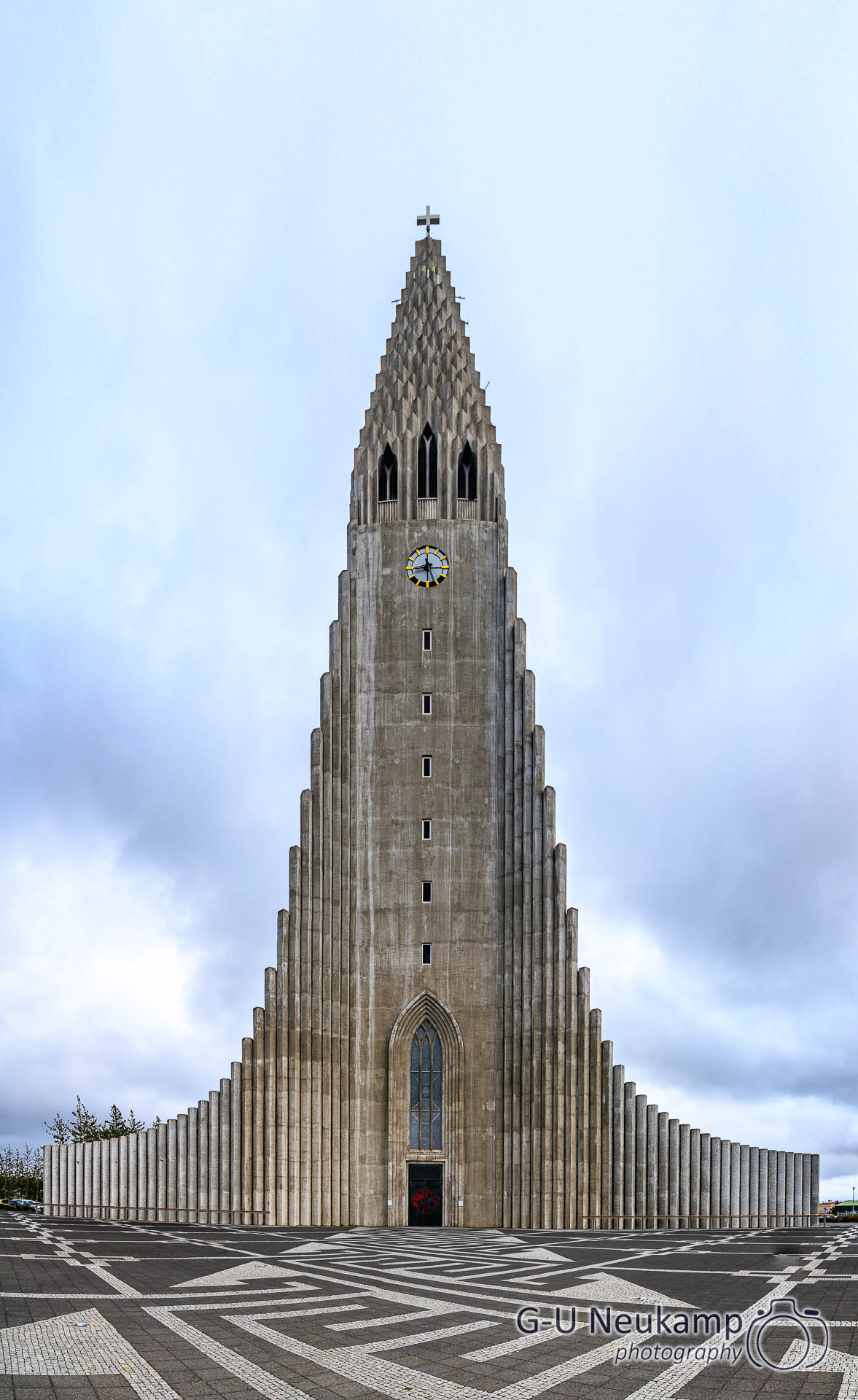
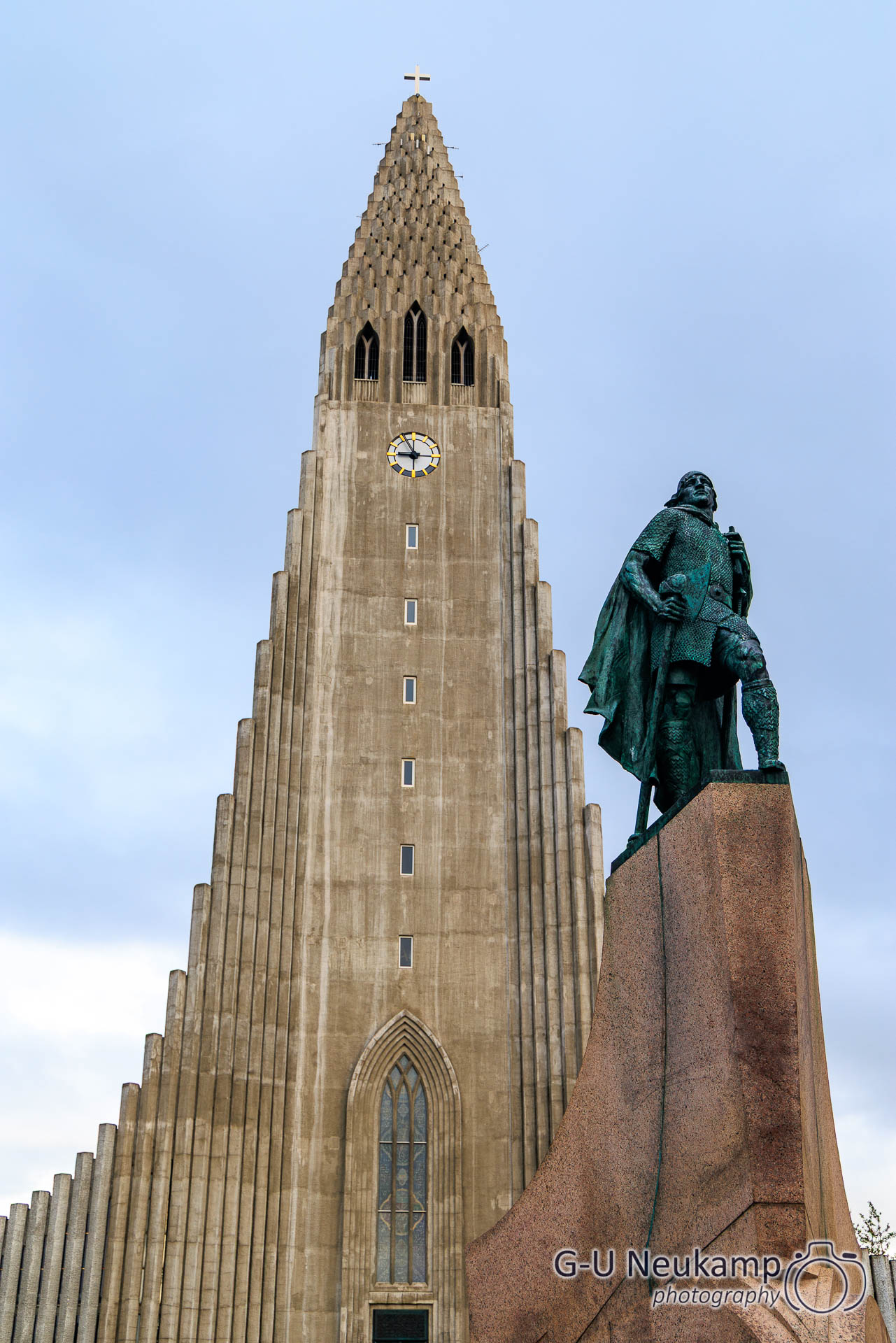
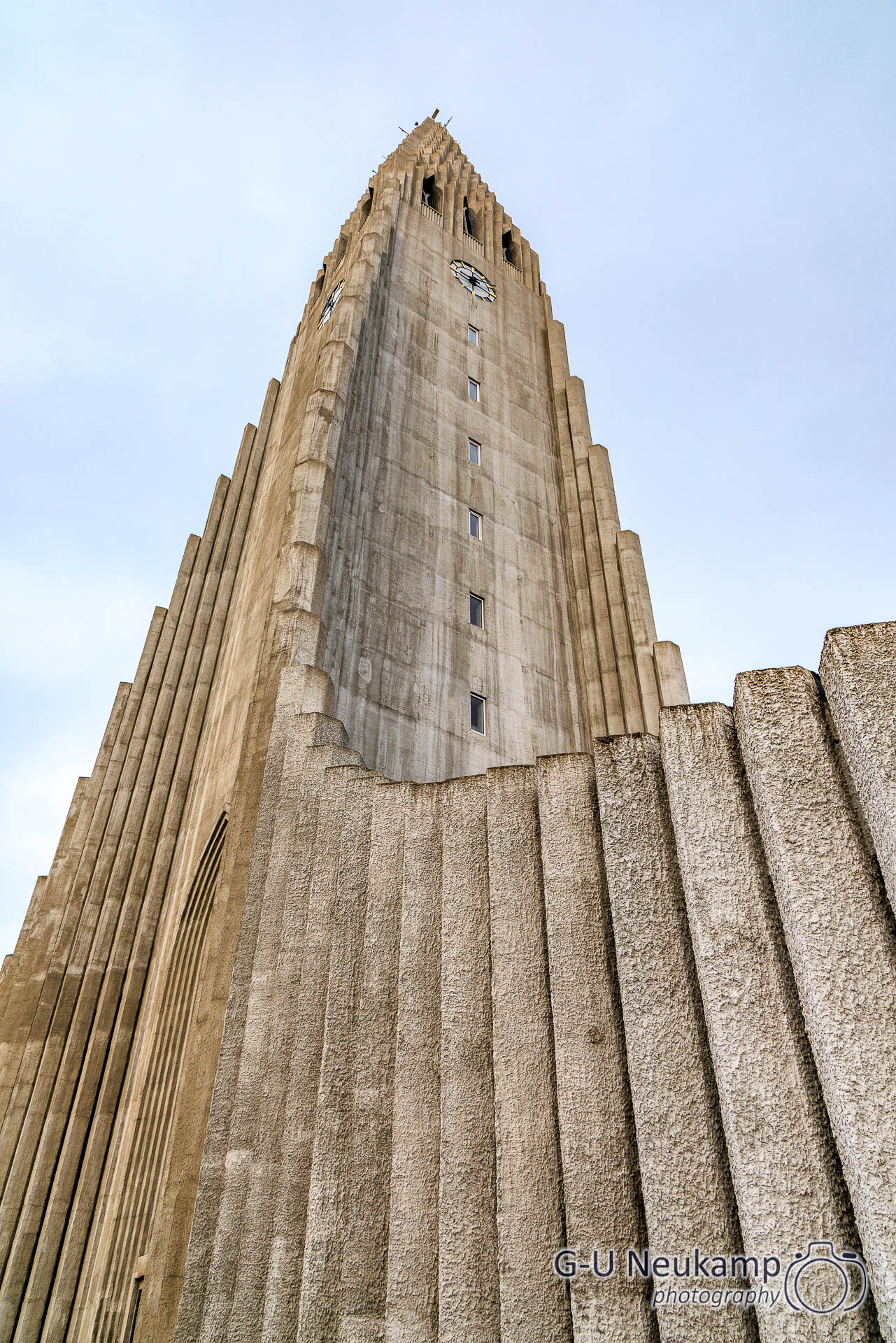
In front of the church you can see the statue of Leifr Eiricsson, a famous Icelander.
Leifr Ericsson (c. 970–1020) was an Icelandic explorer and is considered one of the first Europeans to set foot on North American soil – around 500 years before Christopher Columbus. He is said to have reached an area that the Vikings called Vinland, presumably on the coast of Newfoundland in present-day Canada.
The statue in front of Hallgrímskirkja commemorates the famous Viking and was a gift from the USA to mark the year 1930, when Iceland celebrated the 1000th anniversary of its parliament.
Then it started raining heavily again, so we had to cancel our plans for another stroll through the city. After our brief visit to Reykjavik, we arrived at our last campsite, Tjaldsvæði Sandgerðis, near Kevlavik Airport. Tomorrow afternoon, we will return the camper and spend our last night in Iceland in a hotel right next to the airport.
